On collaboration - éditions Exposé-e-s
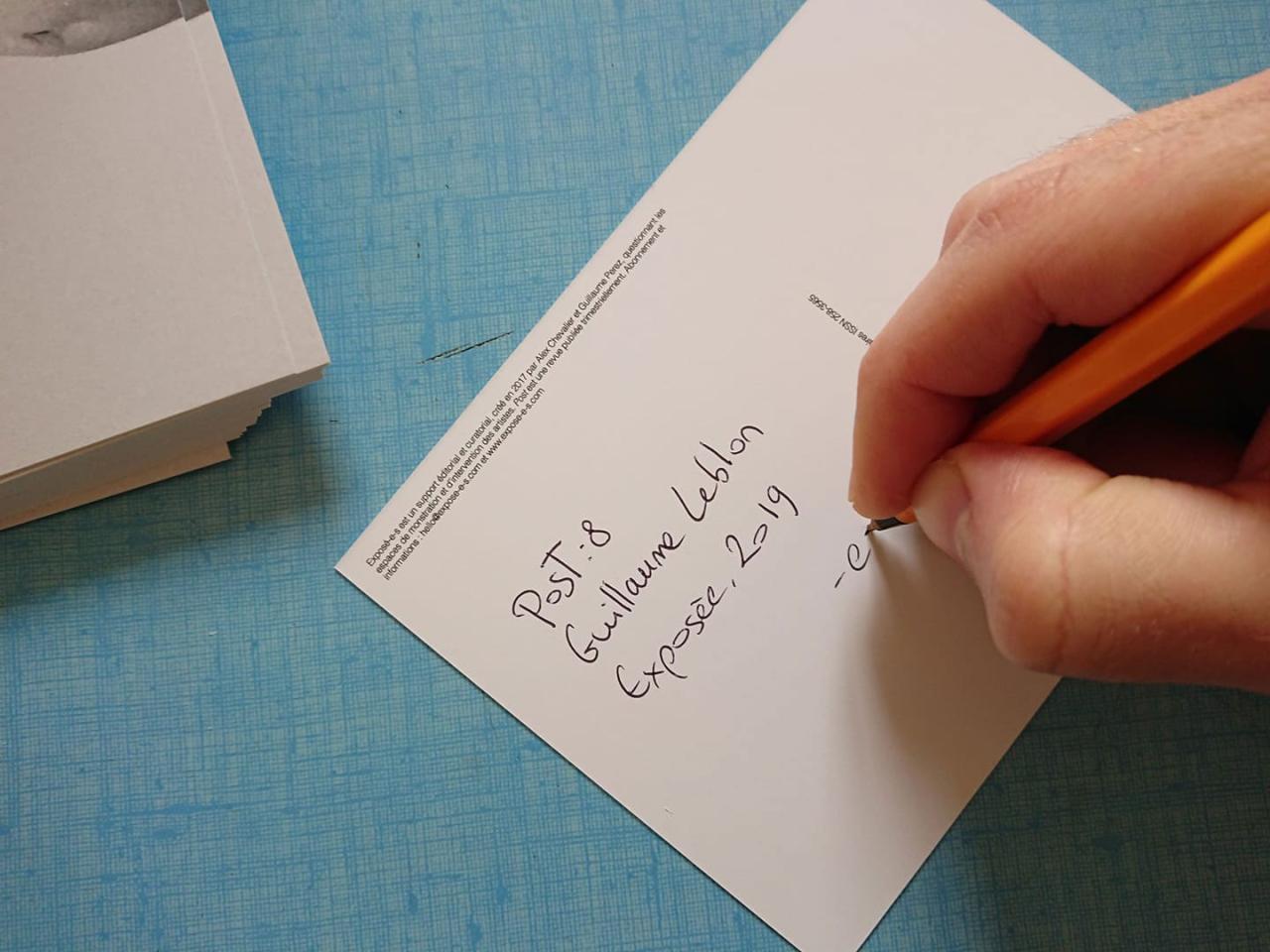
In 2014, when we met in the context of an experimental residency between three organisms—Artistes en Résidence, Clermont-Ferrand, Lieu-Commun, Toulouse and L'Attrape-couleurs, Lyon—nothing suggested the work or project to come.
It all started with the desire to collaborate. Both parties were working on curatorial and publishing projects in parallel with their personal art (BROADCAST POSTERS for Guillaume, KONTAKT and LES INVISIBLES for Alex). Along with a friendship in the making, soon came a desire to carry out a project in common, to create a vague entity with two viewpoints, two complementary approaches to art and publishing.
In 2016, a duo exhibition at the URDLA sealed the deal with a publication (ÇA PRESSE n°67, URDLA) and allowed us to realize this desire to collaborate with different figures on the French art scene, and internationally.l.
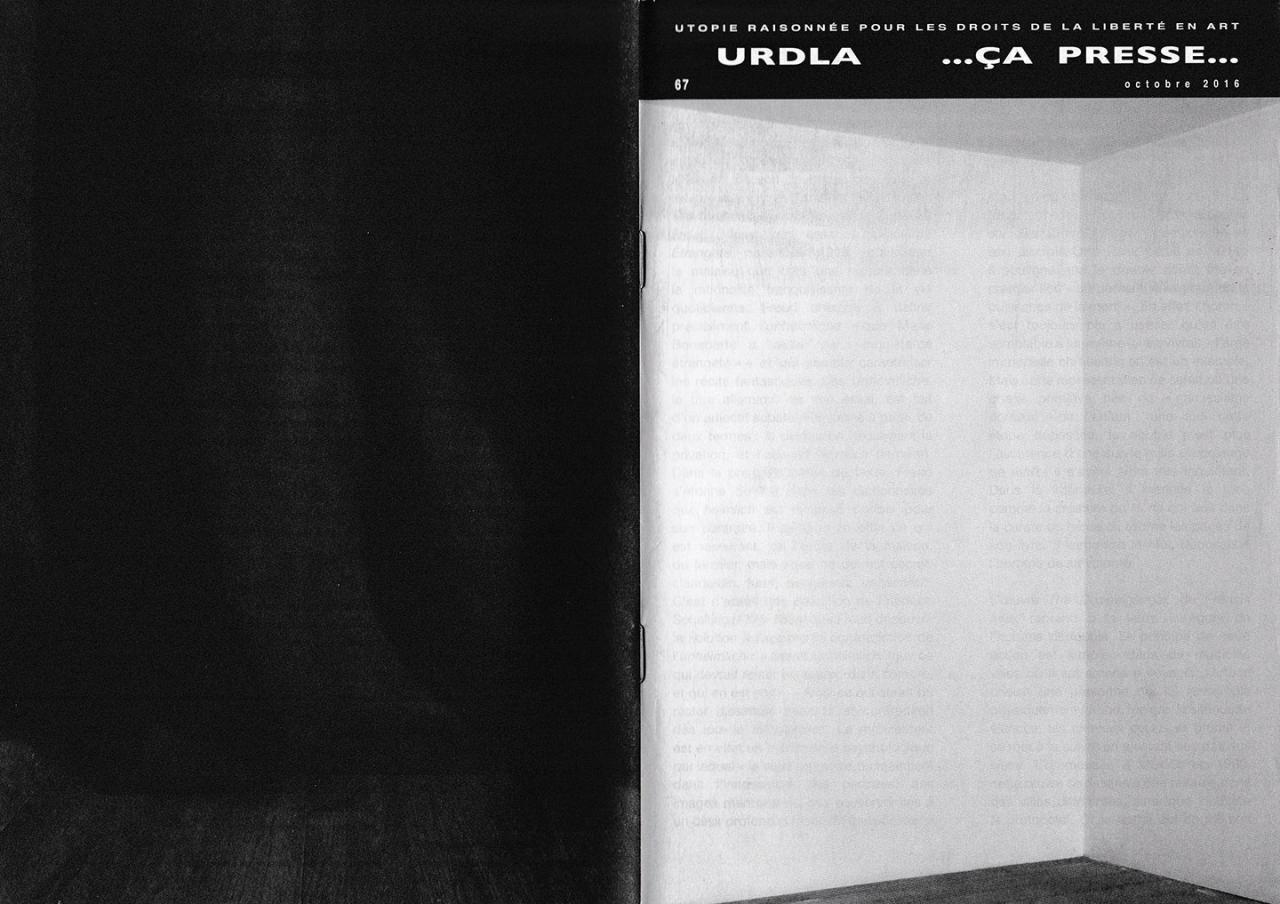
With Martial Déflacieux, Émilie Ding, Sara Enrico, Lizzie Feather, Mirak Jamal, Sophie Lapalu, Cyrille Noirjean, Julie Portier
Image : post scan
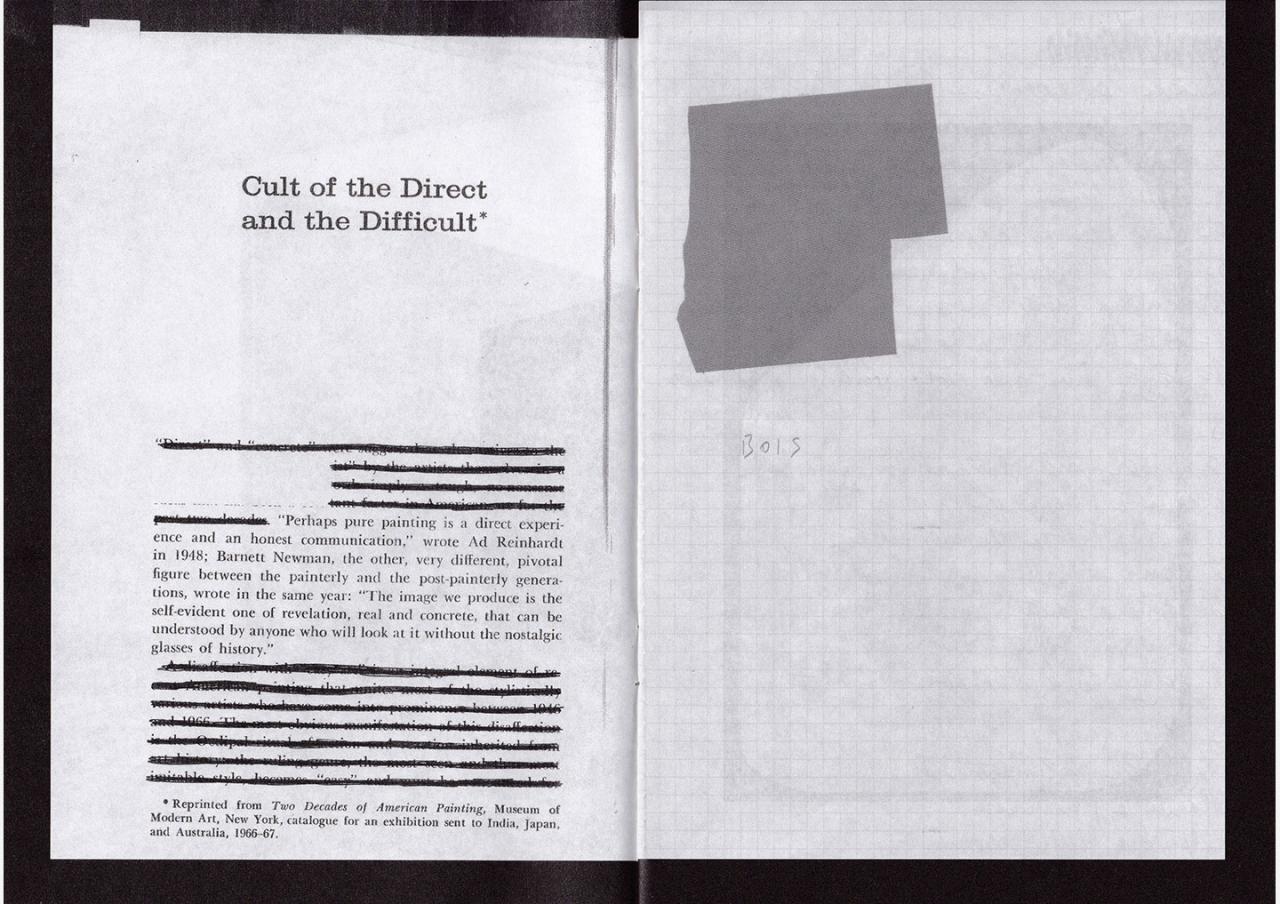
With Martial Déflacieux, Émilie Ding, Sara Enrico, Lizzie Feather, Mirak Jamal, Sophie Lapalu, Cyrille Noirjean, Julie Portier
Image : post scan
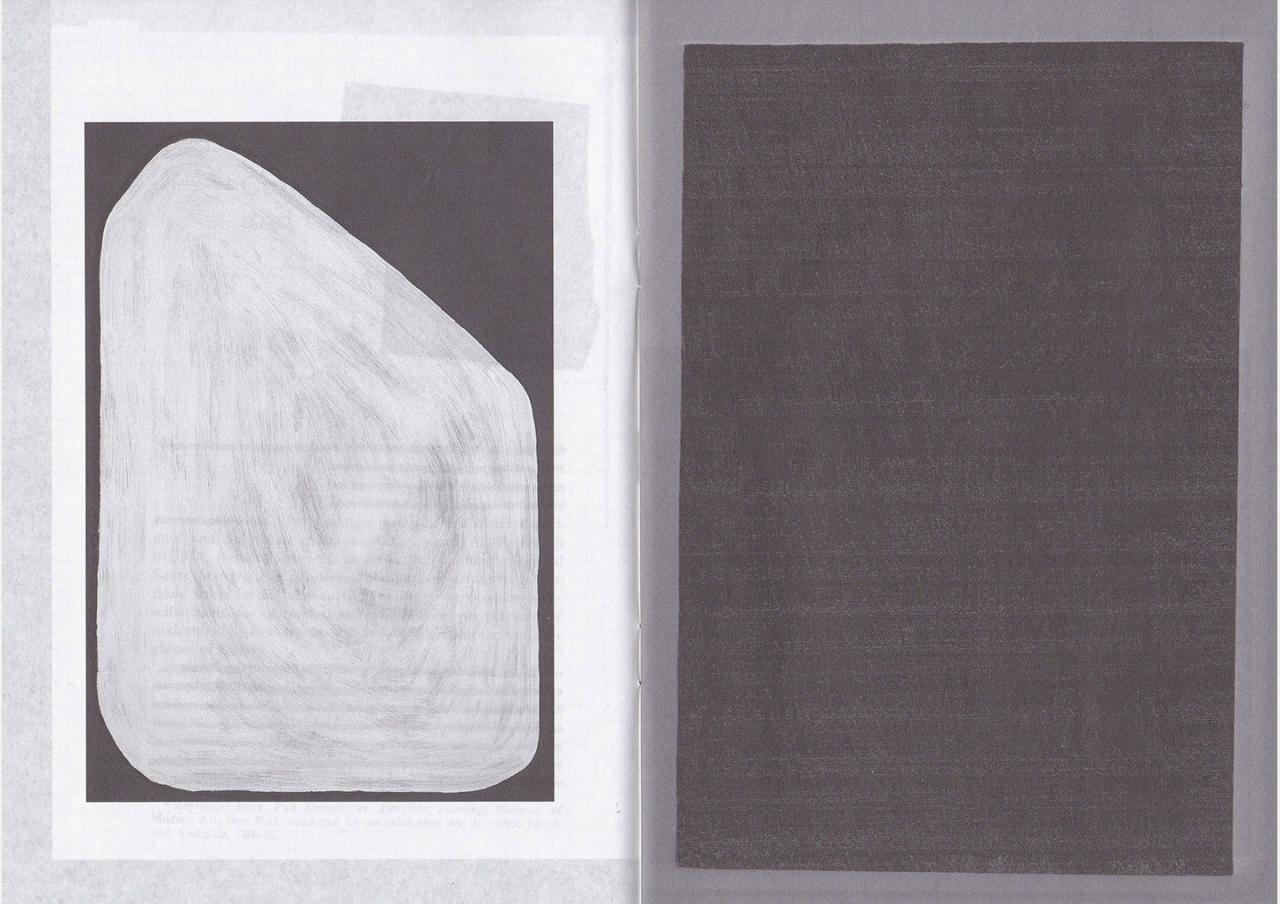
With Martial Déflacieux, Émilie Ding, Sara Enrico, Lizzie Feather, Mirak Jamal, Sophie Lapalu, Cyrille Noirjean, Julie Portier
Image : post scan
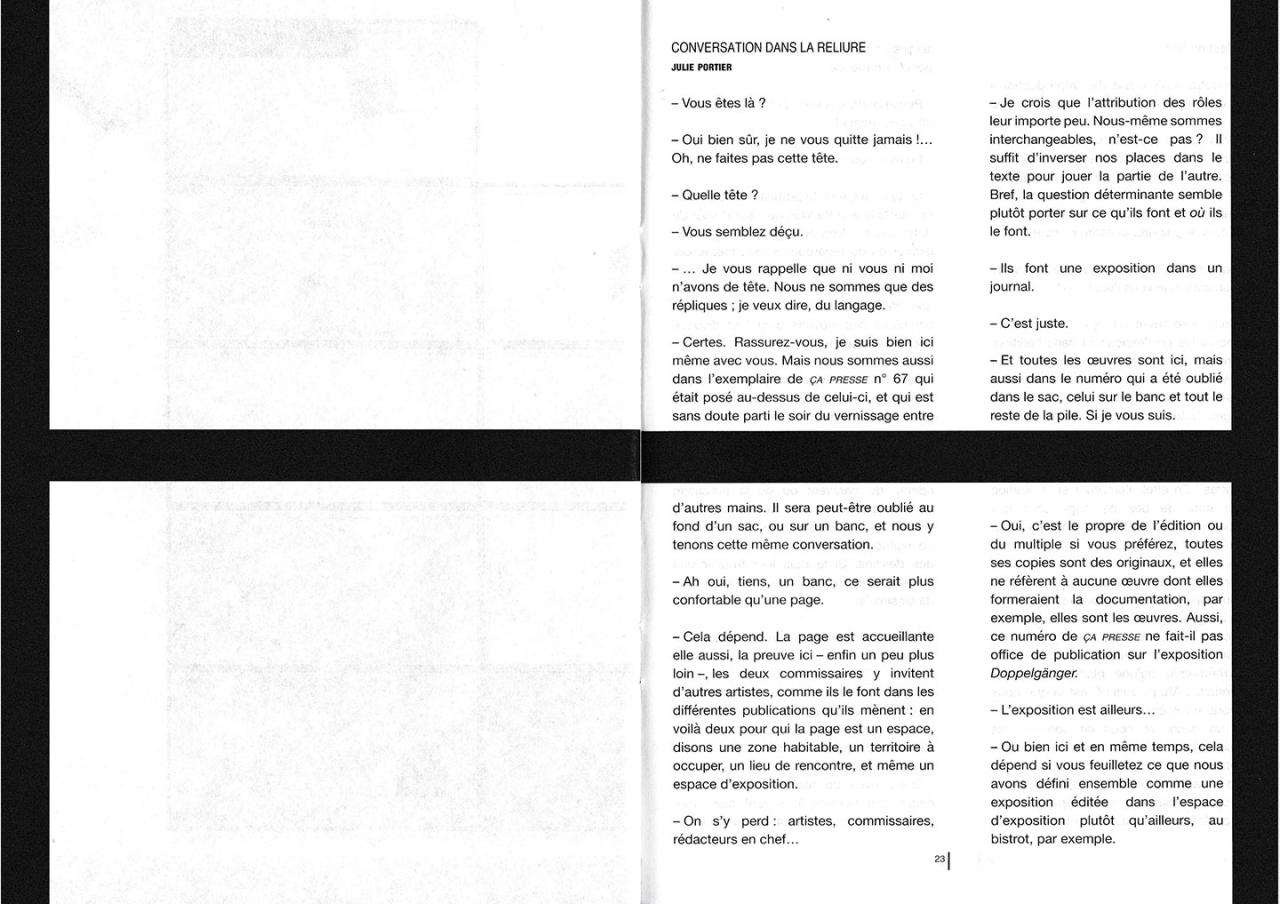
With Martial Déflacieux, Émilie Ding, Sara Enrico, Lizzie Feather, Mirak Jamal, Sophie Lapalu, Cyrille Noirjean, Julie Portier
Image : post scan
After long discussion, a year later, in the summer of 2017, the publishing and curating project “Éditions Exposé-e-s” was born. We live in different cities, one of us in Lyon, Rhône-Alpes, and the other in Corrèze, Bort-les-Orgues. Physical separation has led us to take distance into consideration in pour projects. What follows is much exchange by different means. Digital space, e-mail in particular, is our work’s common place. It’s a space we’ll soon share with the artists we invite to collaborate.
Collaborating means putting everyone on equal footing, and Éditions Exposé-e-s is a project by artists for artists. This approach allows us more freedom in creating each edition.
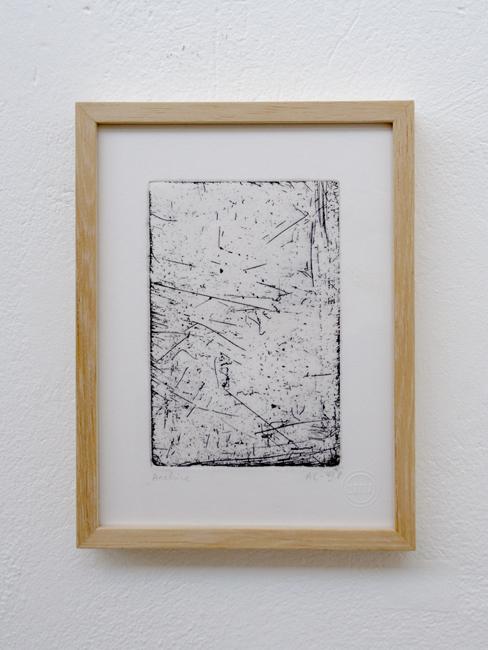
Etching on Rives vellum, 21 x 15,2 cm - Production: URDLA, Villeurbanne
2017 – “POST.” We send each other postcards very regularly. It's a practice which has even been the object of a collective work for an URDLA exhibition, entitled: “Doppelgänger.” This was also the title of an etching that we created remotely by sending out a copper plate by post. So naturally we wanted to publish our collection of cards by working with artists whose methods we appreciate and for whom the format seems appropriate. Quickly a list of names were established, alongside the choice of graphics, and thus the quarterly review was created. List 1 - 3 names, List 2 - 5 names, List 3 - 2 names, etc. The lists allow us to share our ideas and desires, have a reference point, a place to look things up. Choices are made, one of us contacts the artists or galleries and the project is launched.
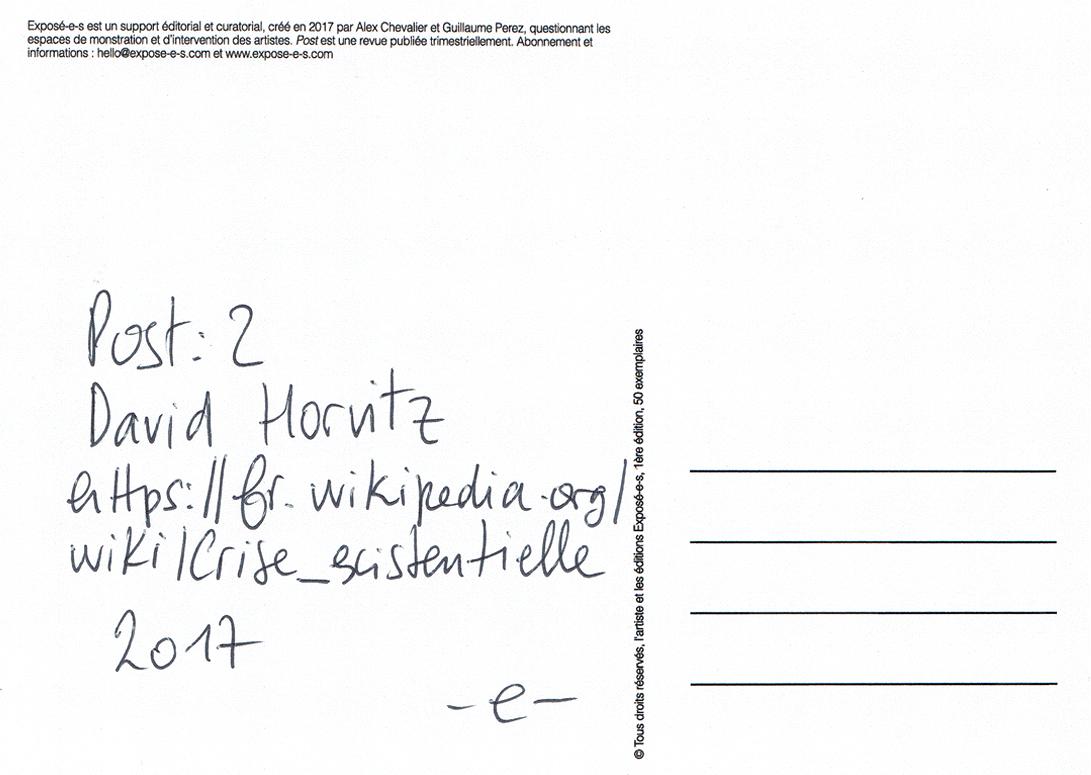
2 pages, four-color print on 300g paper, ballpoint pen, 10,5 x 15 cm, 100 copies
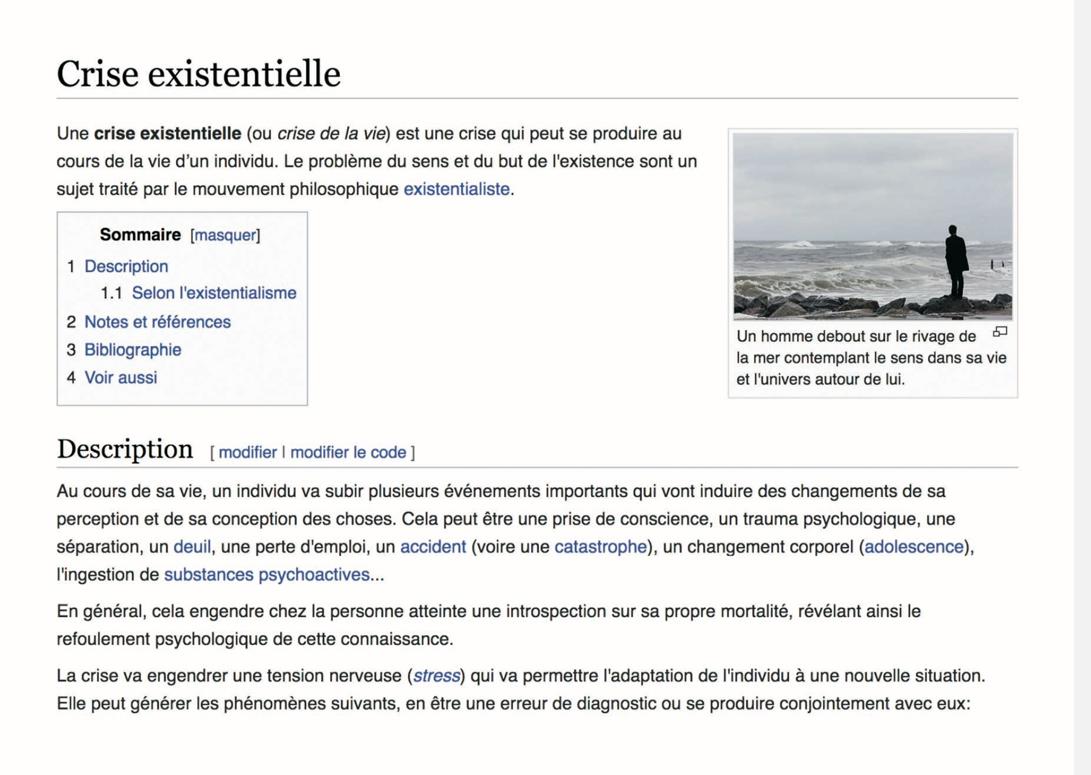
2 pages, four-color print on 300g paper, ballpoint pen, 10,5 x 15 cm, 100 copies
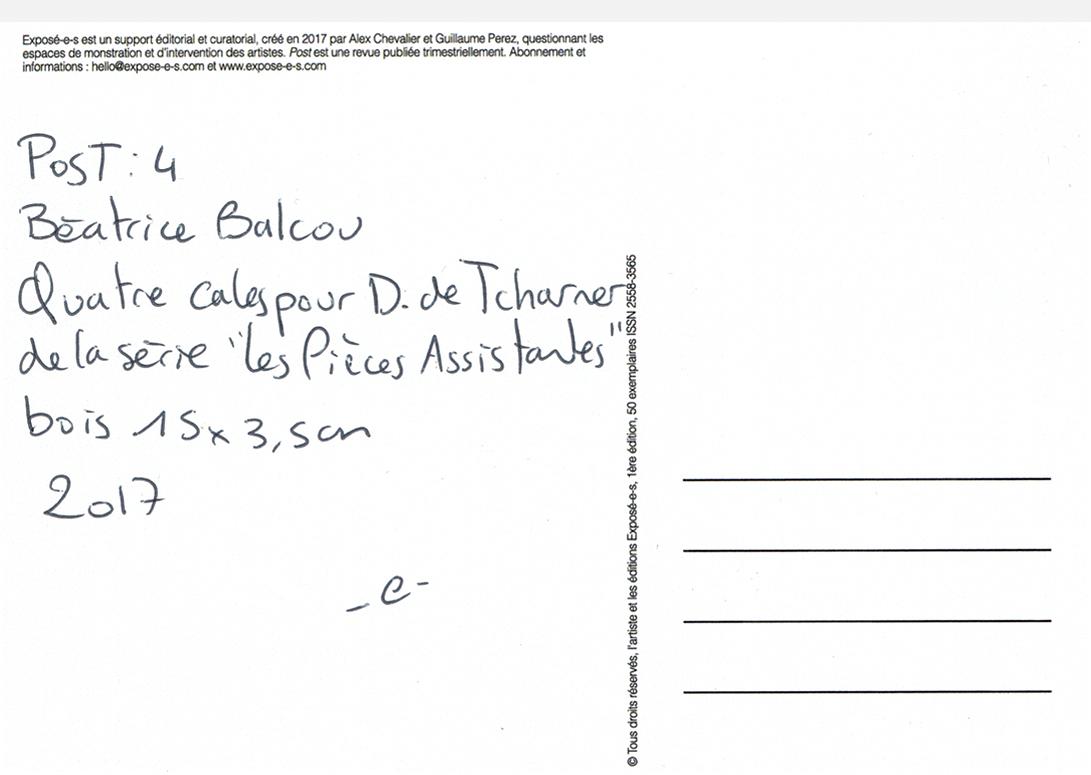
2 pages, four-color print on 300g paper, ballpoint pen, 10,5 x 15 cm, 100 copies
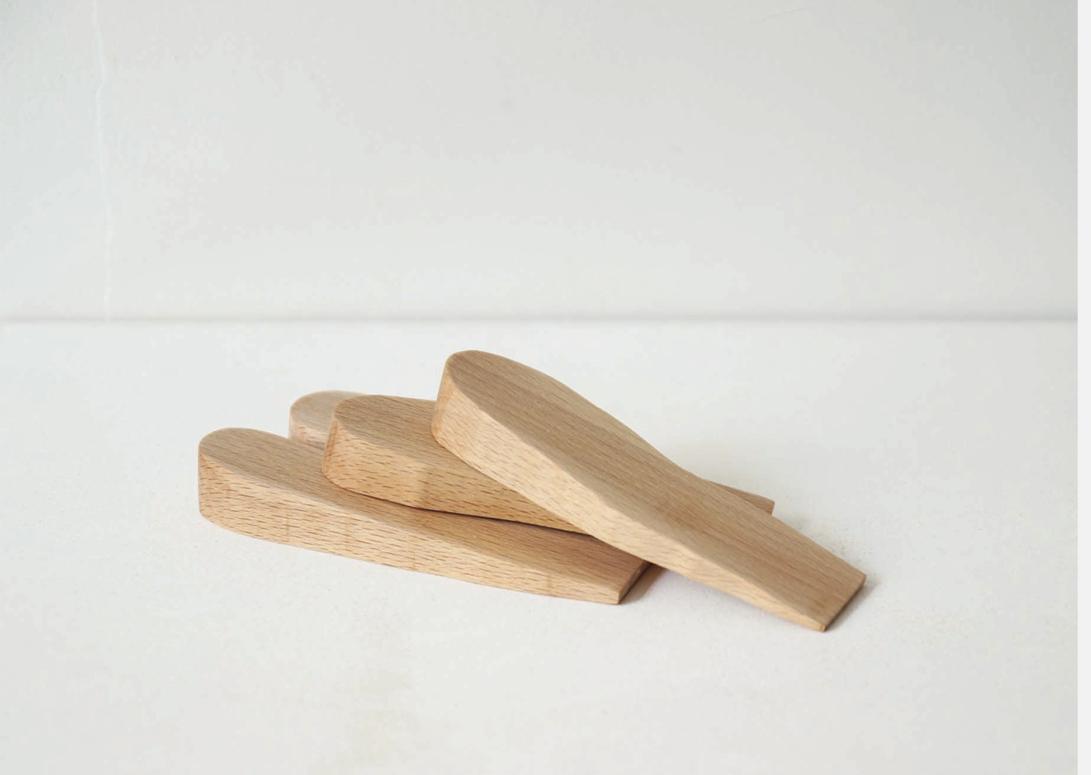
2 pages, four-color print on 300g paper, ballpoint pen, 10,5 x 15 cm, 100 copies
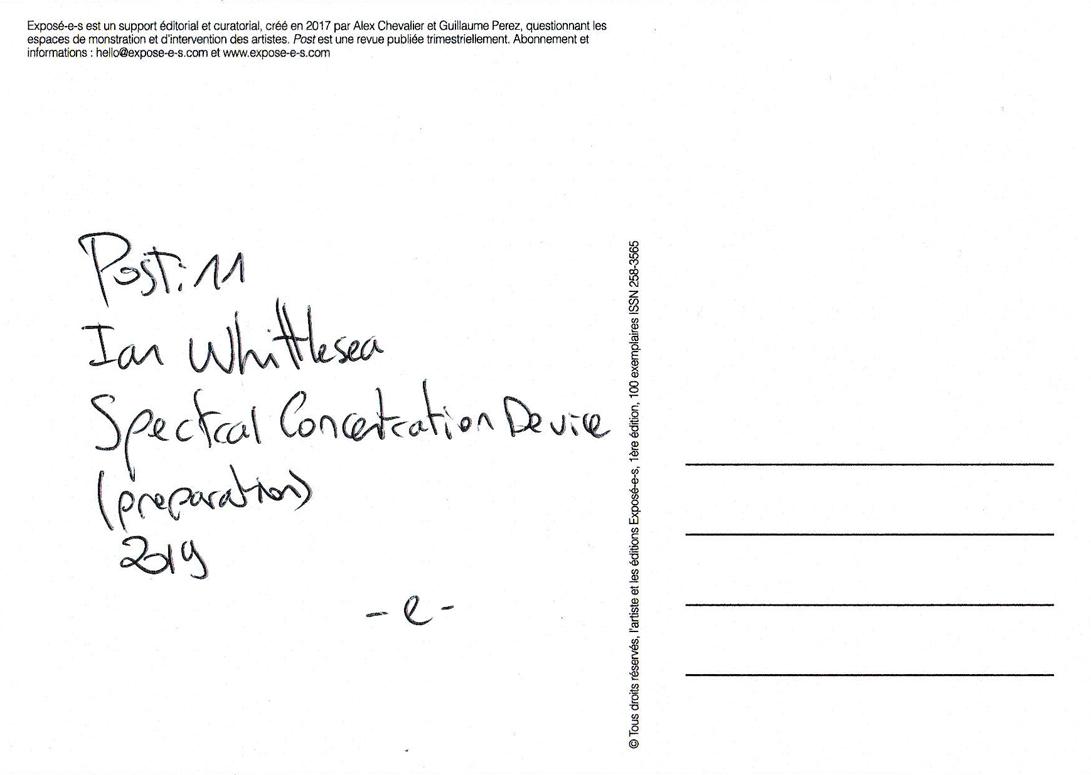
2 pages, four-color print on 300g paper, ballpoint pen, 10,5 x 15 cm, 100 copies
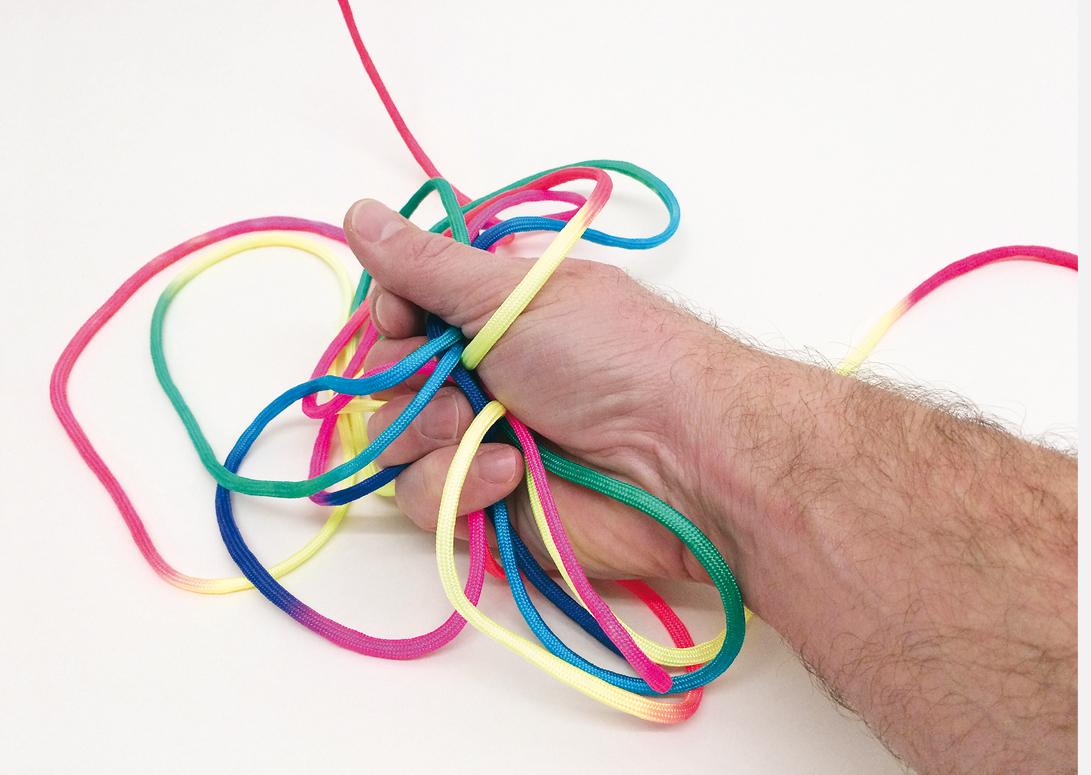
2 pages, four-color print on 300g paper, ballpoint pen, 10,5 x 15 cm, 100 copies
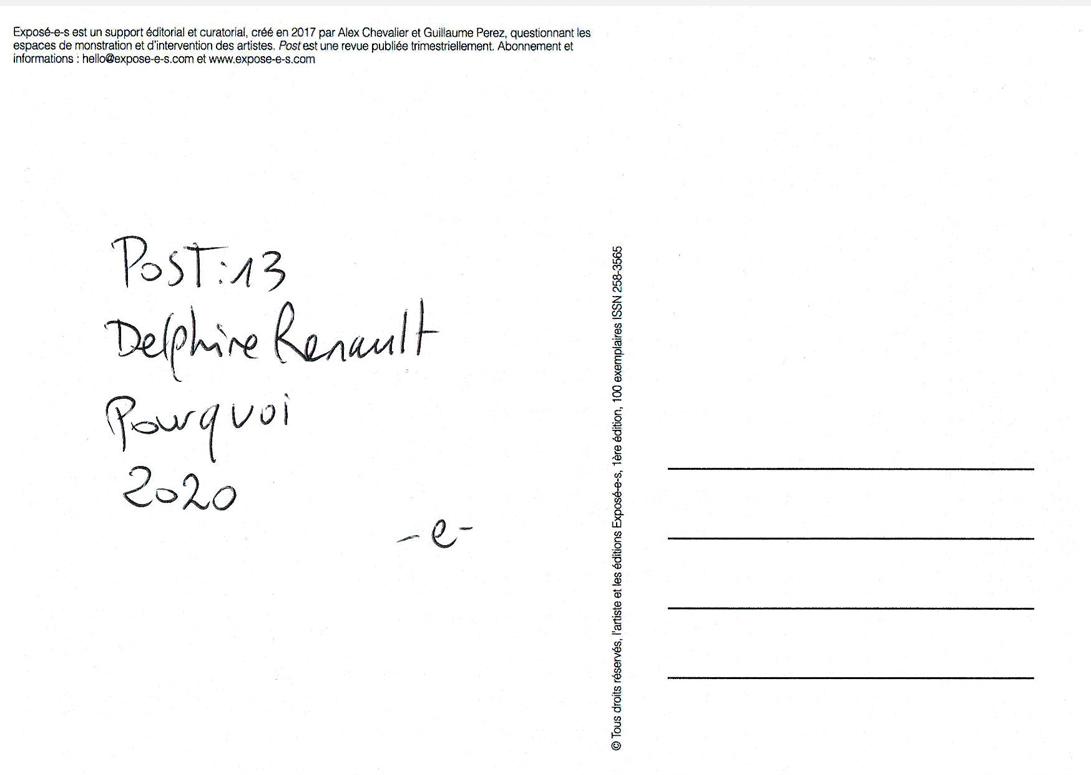
2 pages, four-color print on 300g paper, ballpoint pen, 10,5 x 15 cm, 100 copies
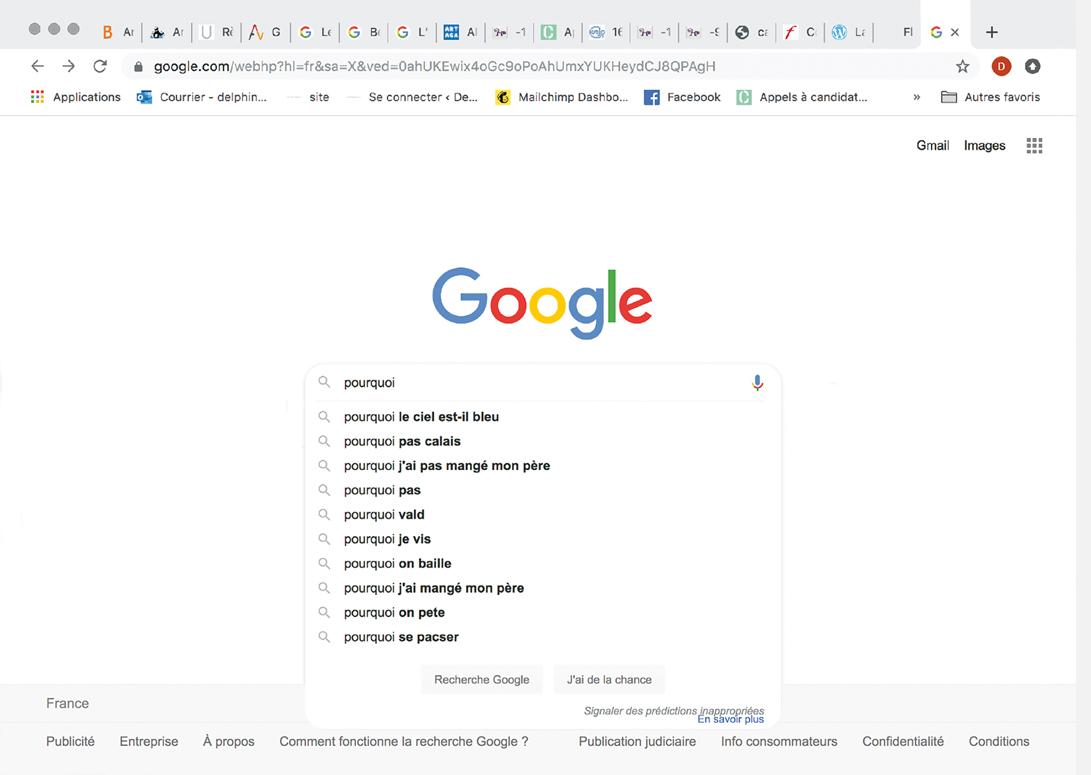
2 pages, four-color print on 300g paper, ballpoint pen, 10,5 x 15 cm, 100 copies
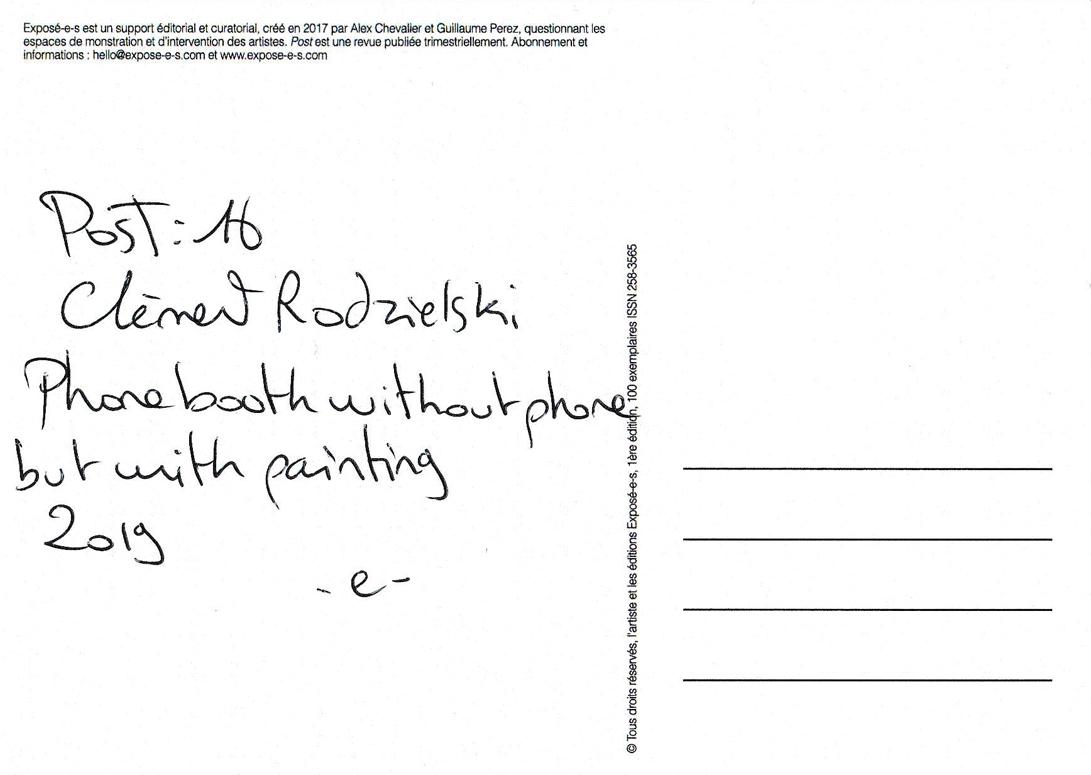
2 pages, four-color print on 300g paper, ballpoint pen, 10,5 x 15 cm, 100 copies
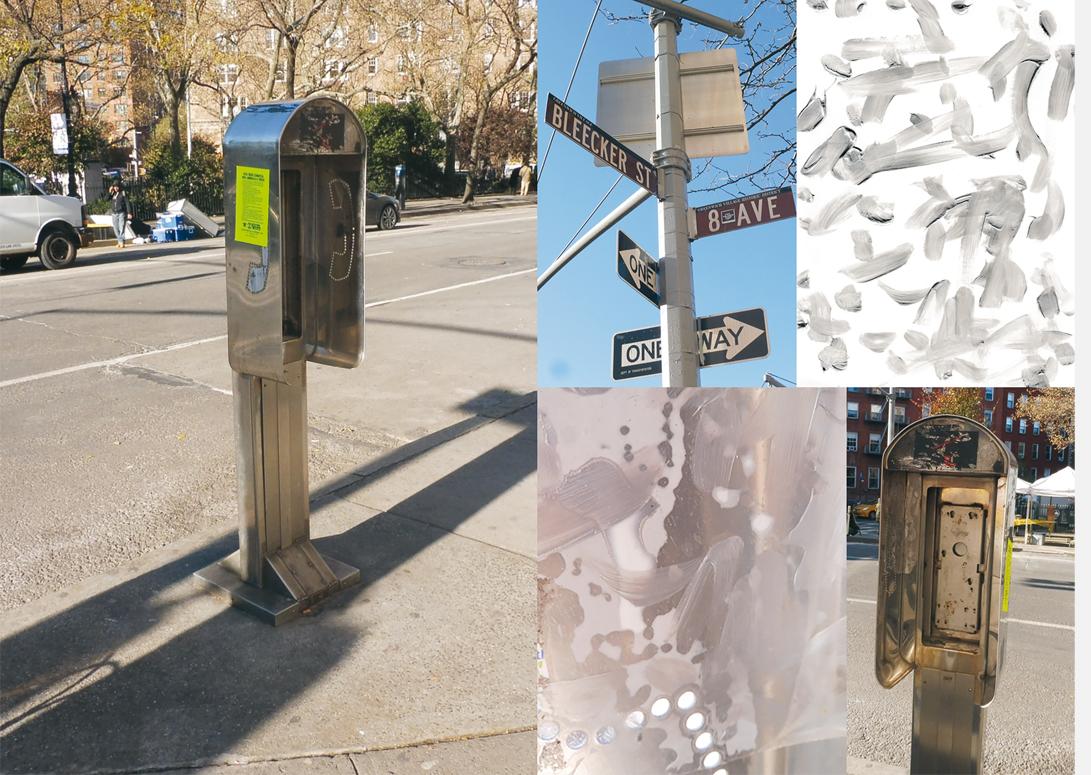
2 pages, four-color print on 300g paper, ballpoint pen, 10,5 x 15 cm, 100 copies
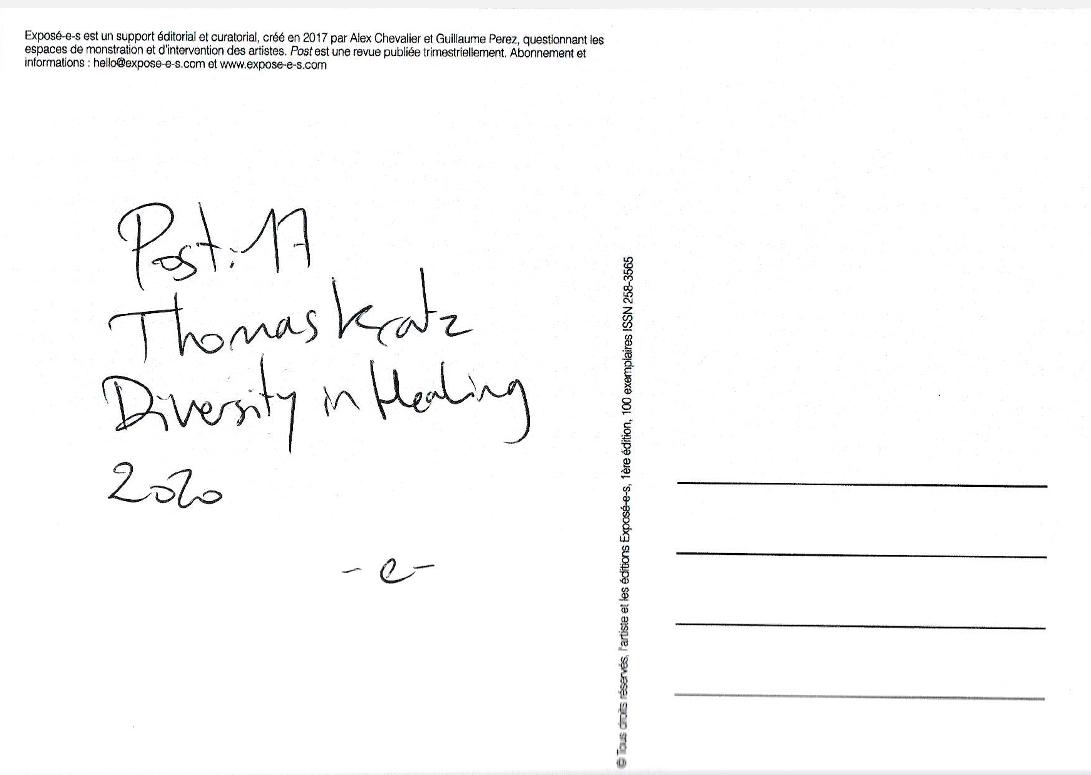
2 pages, four-color print on 300g paper, ballpoint pen, 10,5 x 15 cm, 100 copies
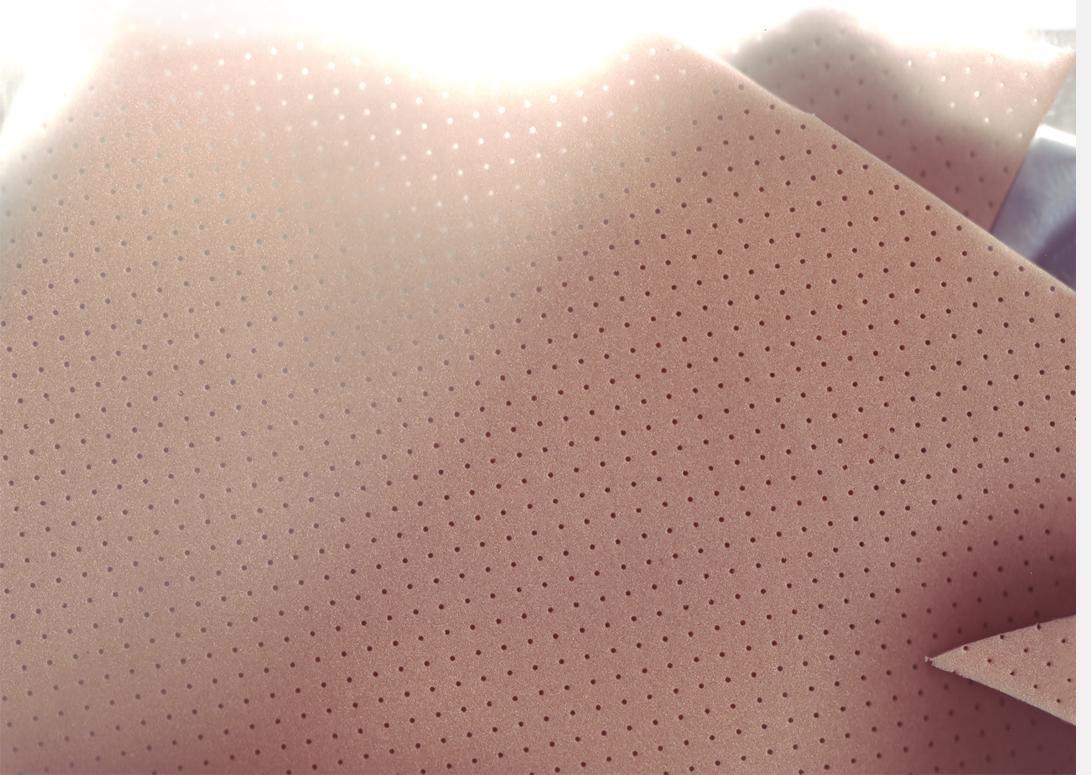
2 pages, four-color print on 300g paper, ballpoint pen, 10,5 x 15 cm, 100 copies
When POST was begun, we wanted to create an object, a unique, addressed collection. This choice is what led us to call it a “review", because it's a three-month periodical. Due to this format of unique, personal address from an artist to a “reader-audience”, the object seemed to us to be a subscription-only one: receiving POST means committing oneself to a project, to be part of a club.

▸ Guillaume Perez: "Unlike a poster, the postcard takes place in the private register, it establishes a link between one person and another. We encourage the artists to think along these lines. For example Guillaume Leblon and his proposals on the body, this inevitably doubles the person receiving the postcard. Samuel François, who takes a lot of photographs while traveling, proposed an old travel photo, for him this fulfilled a desire to place the postcard in a more contextual propos, to replay it in a different time.
▸ Alex Chevalier: the postcard is an excerpt of an artist's work but not only this...The principle of POST is in subscription, which is an act of choice. We were able to see with time that there's a real desire, and expectation, on the part of the people who subscribe and receive postcards over the months. This creates an intimate relationship, much more so than we'd imagined. It almost becomes exclusive."
— Excerpt from an interview conducted by Marie Gayet for the review Artaïs, Autumn 2021

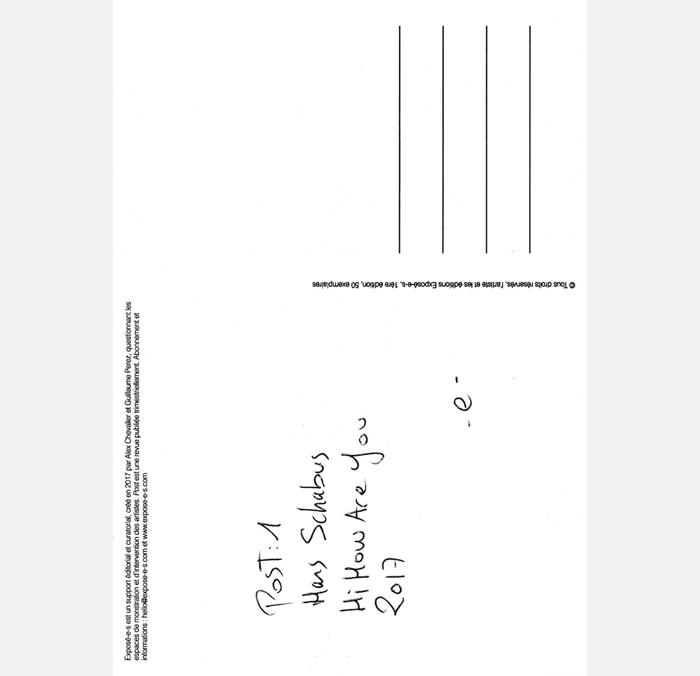
2 pages, four-color print on 300g paper, ballpoint pen, 10,5 x 15 cm, 100 copies
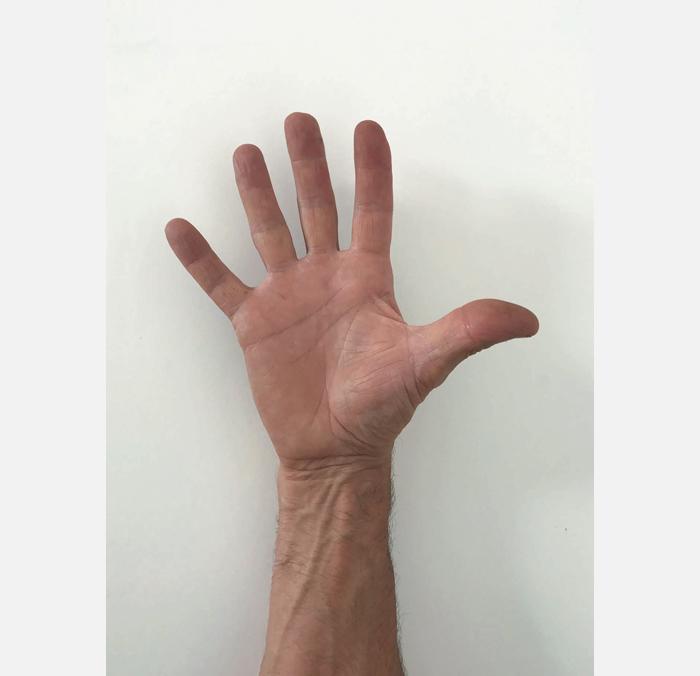
2 pages, four-color print on 300g paper, ballpoint pen, 10,5 x 15 cm, 100 copies
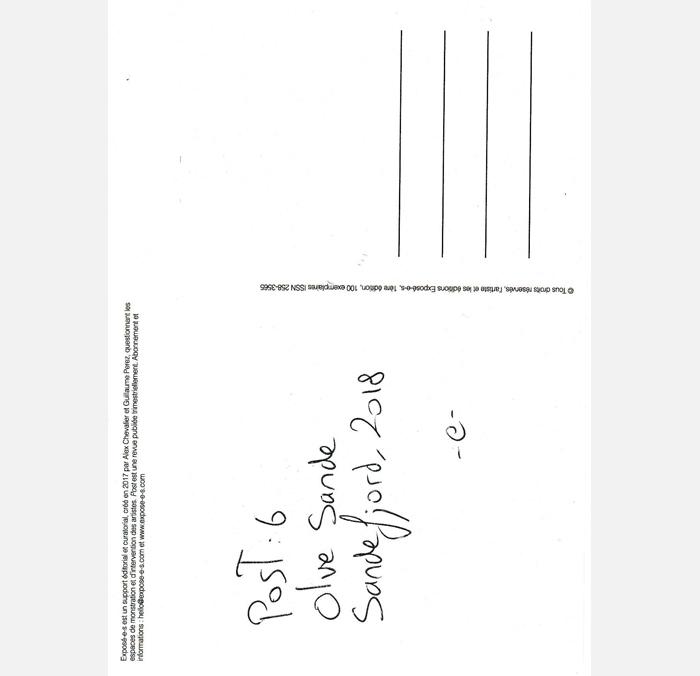
2 pages, four-color print on 300g paper, ballpoint pen, 10,5 x 15 cm, 100 copies
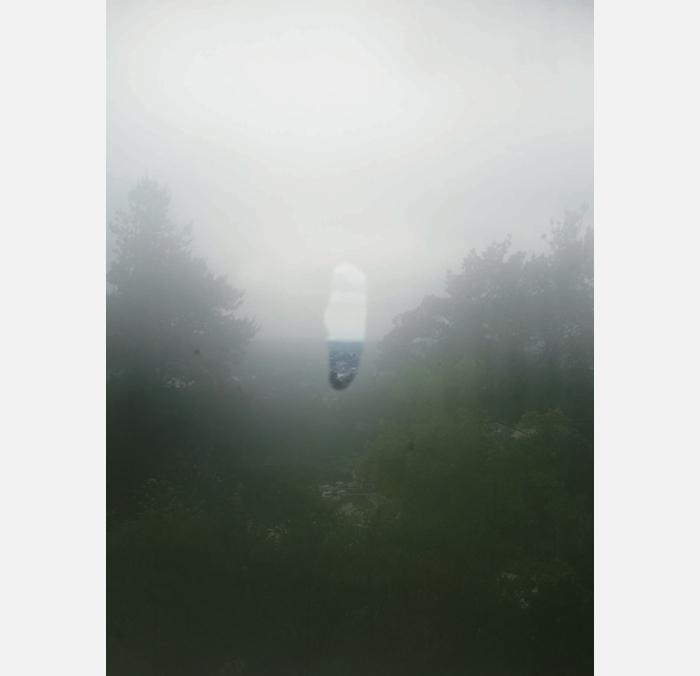
2 pages, four-color print on 300g paper, ballpoint pen, 10,5 x 15 cm, 100 copies
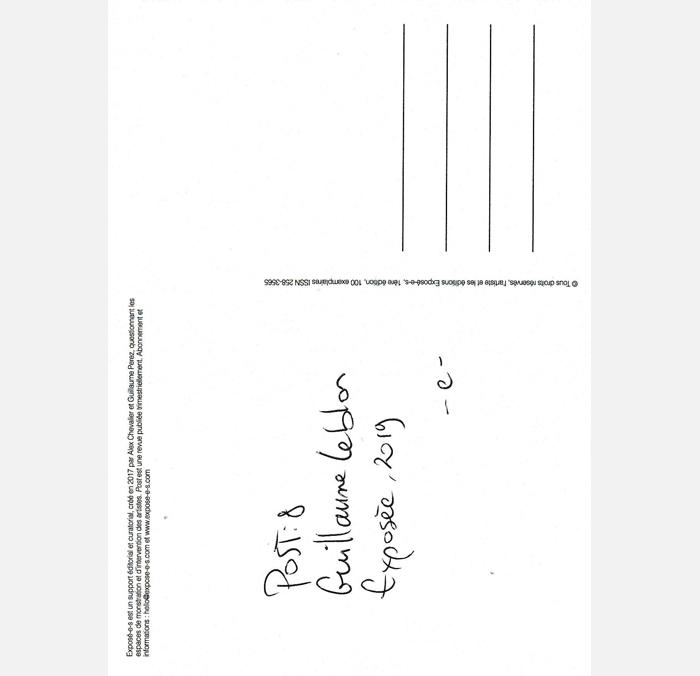
2 pages, four-color print on 300g paper, ballpoint pen, 10,5 x 15 cm, 100 copies
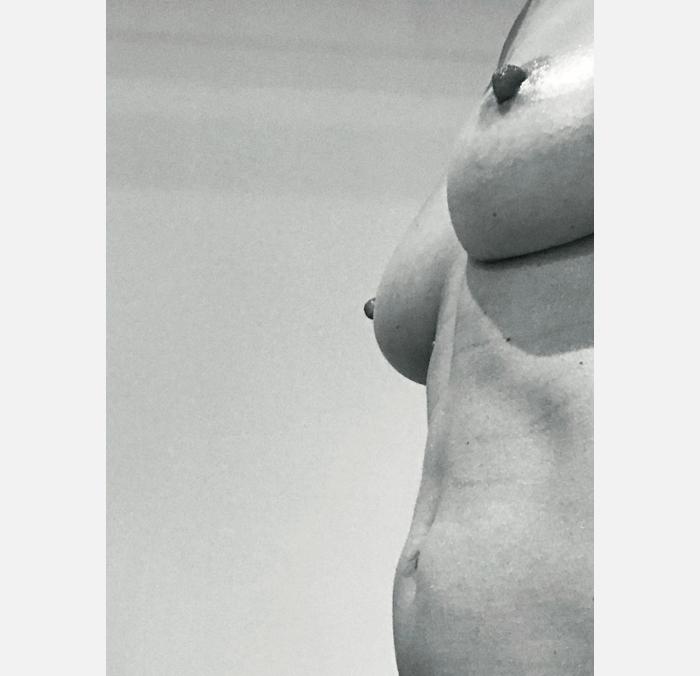
2 pages, four-color print on 300g paper, ballpoint pen, 10,5 x 15 cm, 100 copies
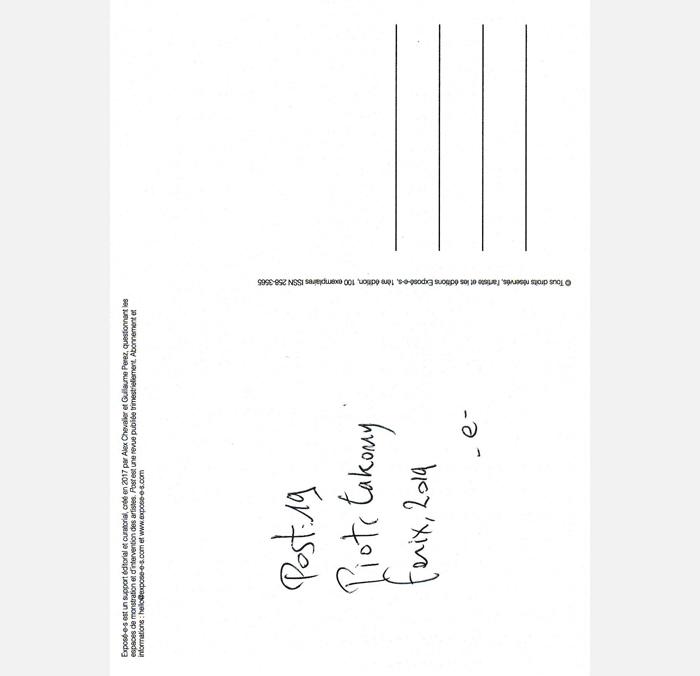
2 pages, four-color print on 300g paper, ballpoint pen, 10,5 x 15 cm, 100 copies
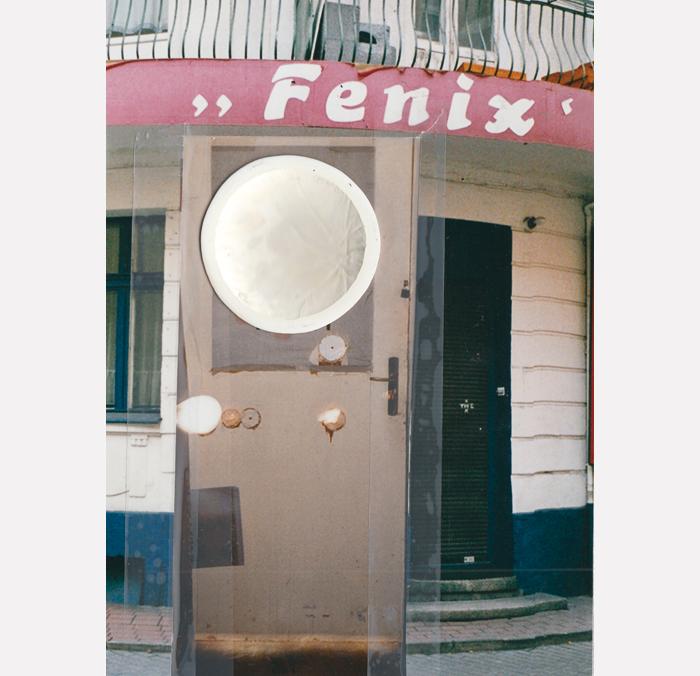
2 pages, four-color print on 300g paper, ballpoint pen, 10,5 x 15 cm, 100 copies
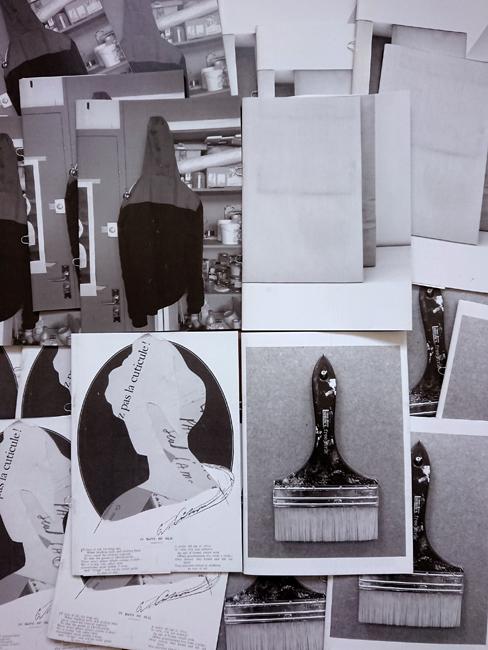
LIBRARY, Maxime Thieffine, In the studio, 2019 ; LIBRARY, Estèla Alliaud, Plan and variable, 2019
LIBRARY, Hippolyte Hentgen, Sources, 2021 ; LIBRARY, Sylvain Croci-Torti, Marrow, 2021
In 2019, we we’re both keen on developing new forms, so “LIBRARY,” a series of published monographs, came from the idea of talking about the backstage of a work, its edges, what motivates research. In the same way as in POST (continuing in parallel), LIBRARY came out of name proposals for desired collaborations, with the idea of a work involving six participants, consisting in much sending and exchange among the invited artists: attached documents, images, text, etc.
For our part, we proposed layouts, first to one another, Version 1, Version 2, Version 3, Version 4, etc., in order to arrive at a coherent whole between form and content. Then exchanges with the guest artists continued, as we shared our insights with them and then a proposition.
At the end of these various trials and to-and-fros, a definitive flat plan is approved by three people and goes off for printing, then the publication lives its life: first through launch parties, or public conferences that the artist participates in and where the publication is presented. Next, mail-order sales, again with a committed decision being made: the printed edition is reduced in size and we sell the publication at almost cost price so that the project is easily affordable.
Collections. Even if we allow ourselves the freedom of unique, out-of-format publication, it’s true that from the beginning, with both Post and Library, we wanted to offer spaces with pre-defined characteristics. Published objects whose form would never change and whose content would only be modified.
For POST, for example, the desire was to define a framework: a postcard, whose text—the caption—would be handwritten, and whose visual would be proposed by the artist. LIBRARY was thought up as a collection whose structure would be just as invariable: a series of 48 pages in A5 format, printed in black and white on 135g/m2 paper, with no cover, all bound with saddle-stitching and reinforcement rings. It’s a strict framework that should help artists rethink their work and their approach regarding the studio. Thus moving into black and white works to distance them from their practice.
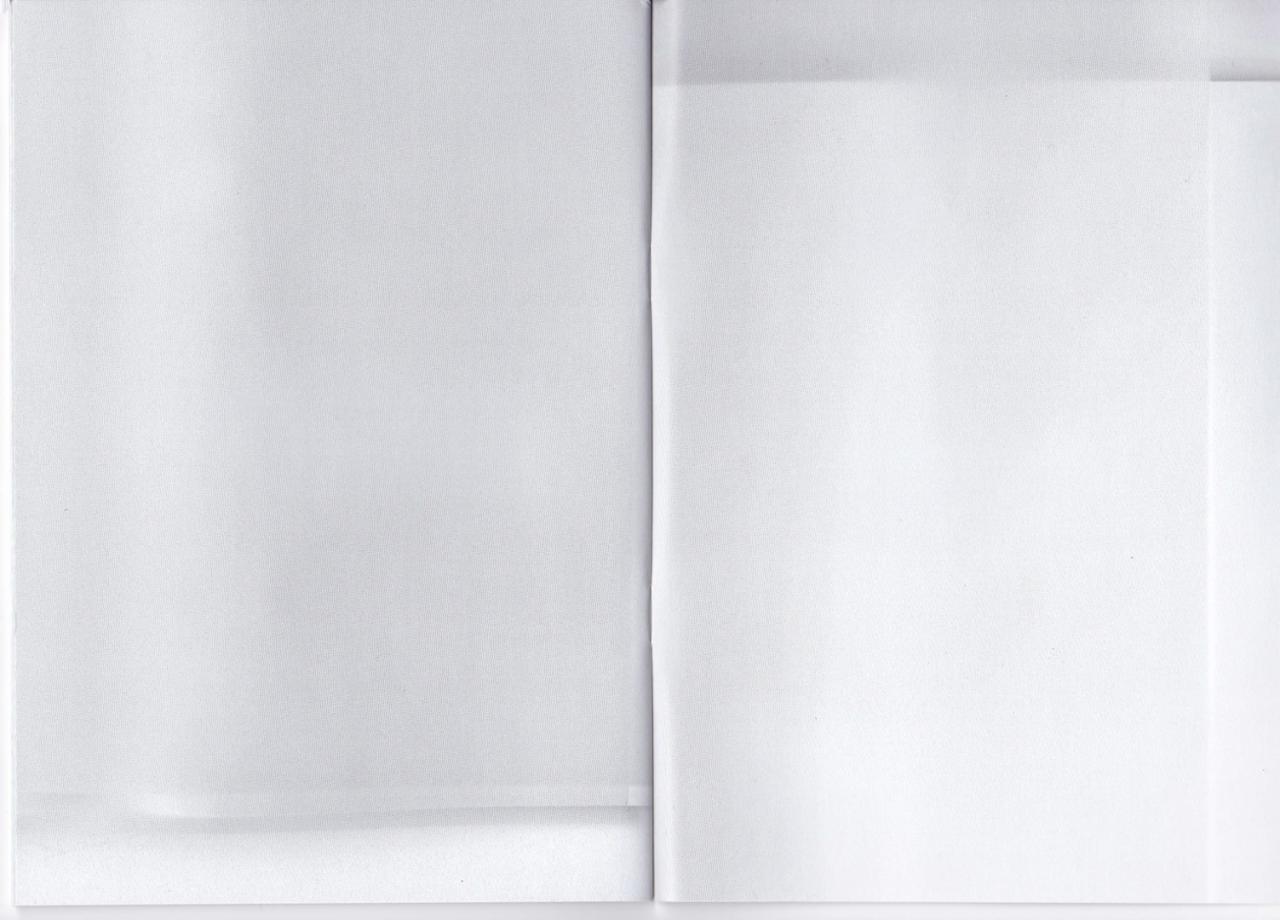
48 pages, B/W printing on 135g paper, saddle-stitched binding with eyelets, 80 copies
Plan et variable, Estèla Alliaud
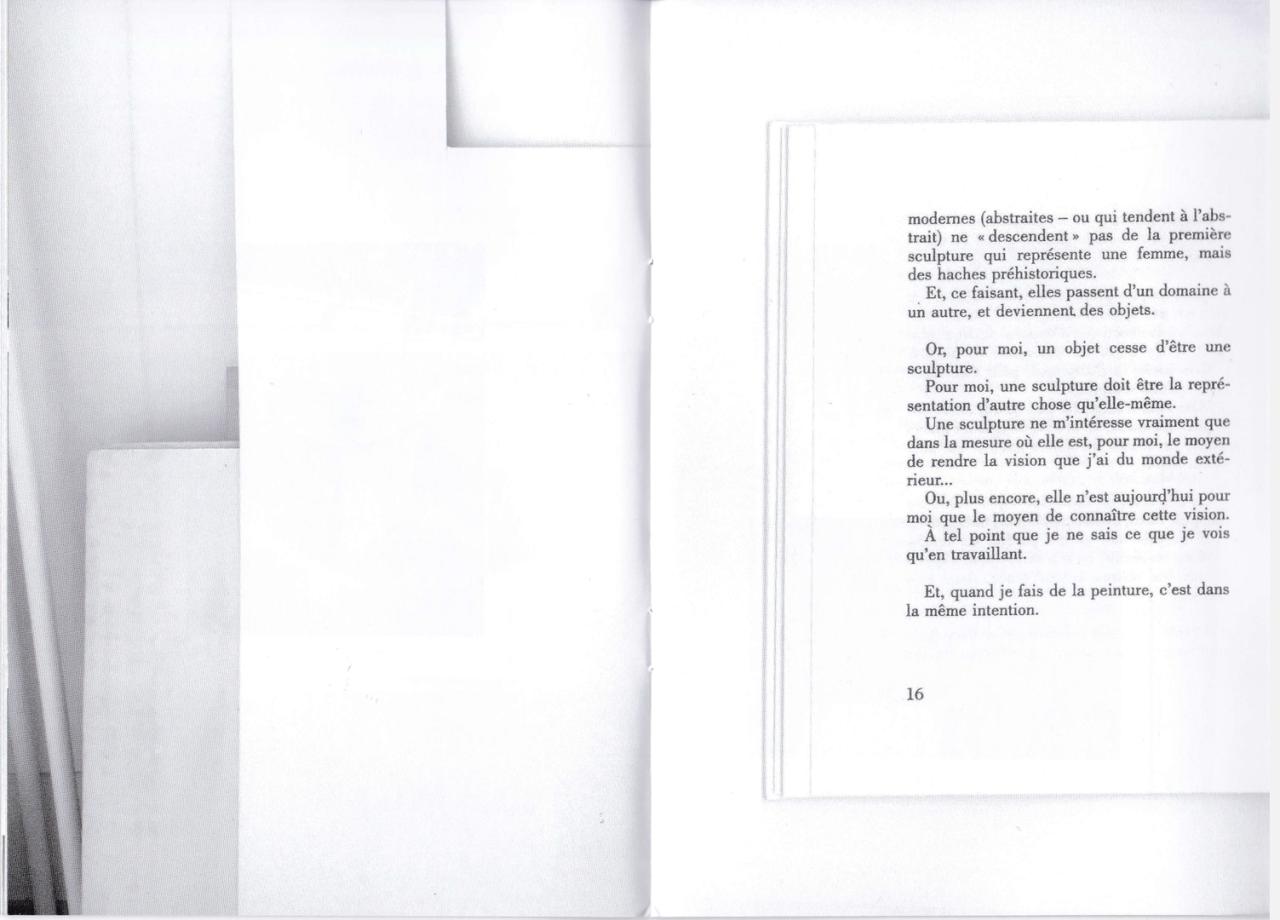
48 pages, B/W printing on 135g paper, saddle-stitched binding with eyelets, 80 copies
Plan et variable, Estèla Alliaud
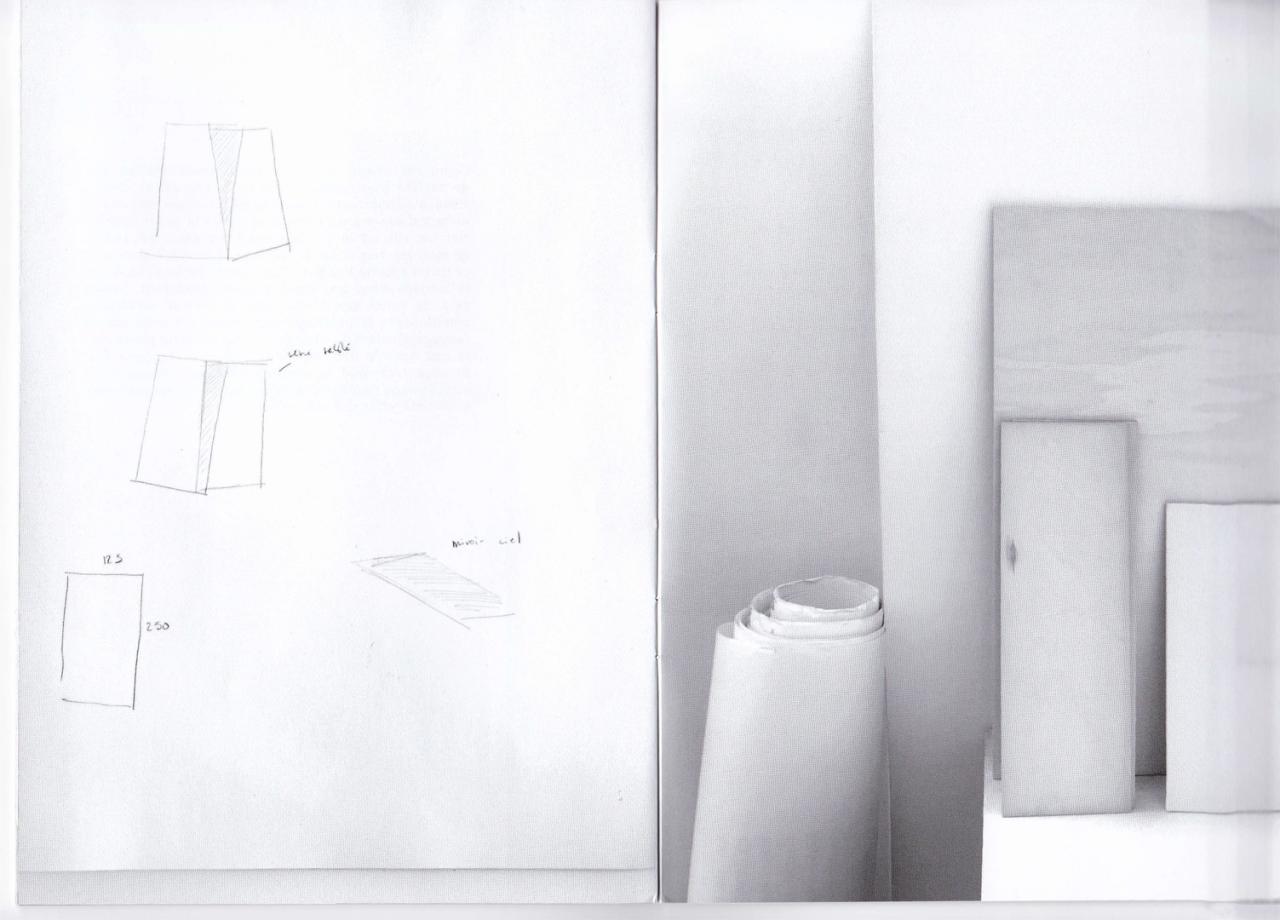
48 pages, B/W printing on 135g paper, saddle-stitched binding with eyelets, 80 copies
Plan et variable, Estèla Alliaud
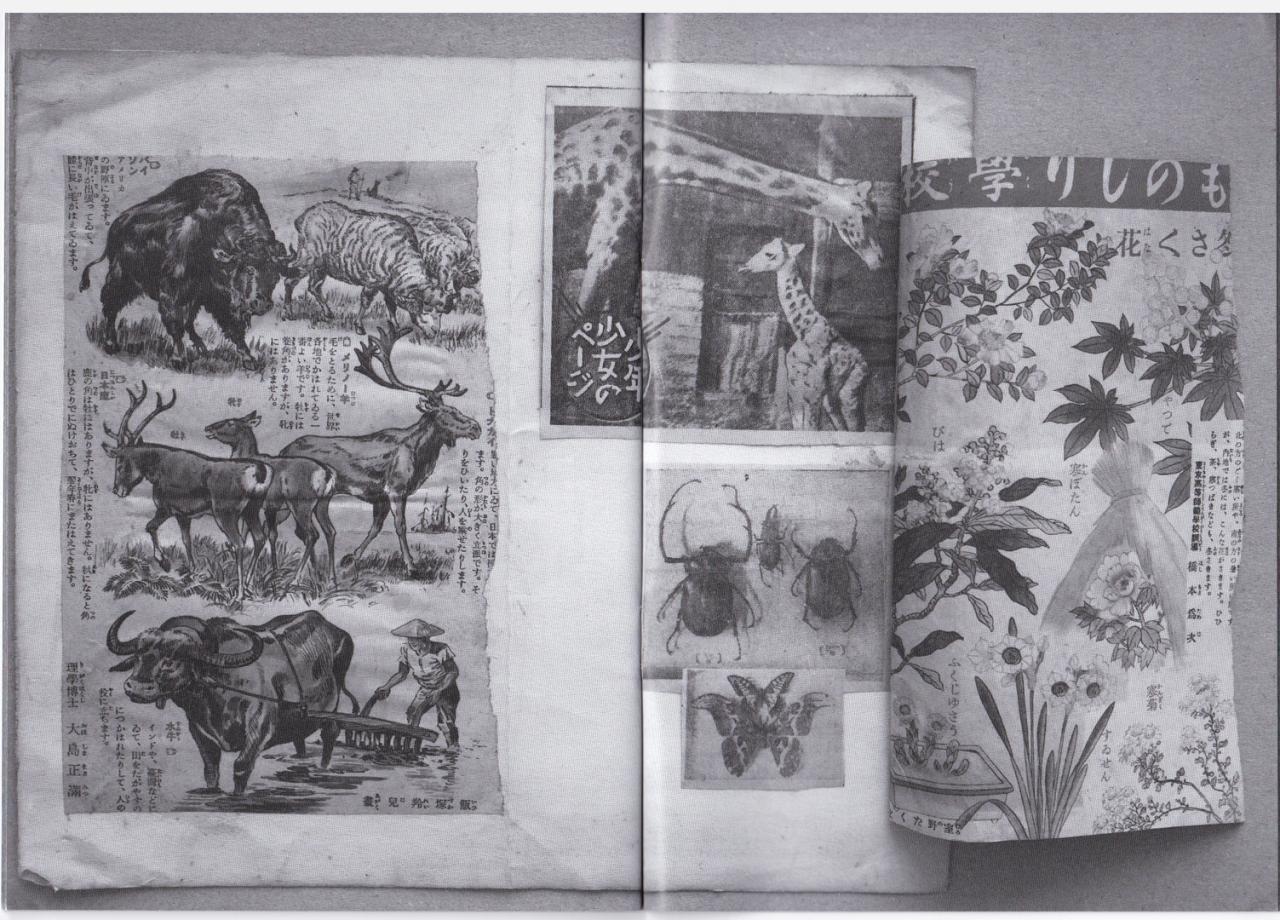
48 pages, B/W printing on 135g paper, saddle-stitched binding with eyelets, 80 copies
In the studio, Maxime Thieffine
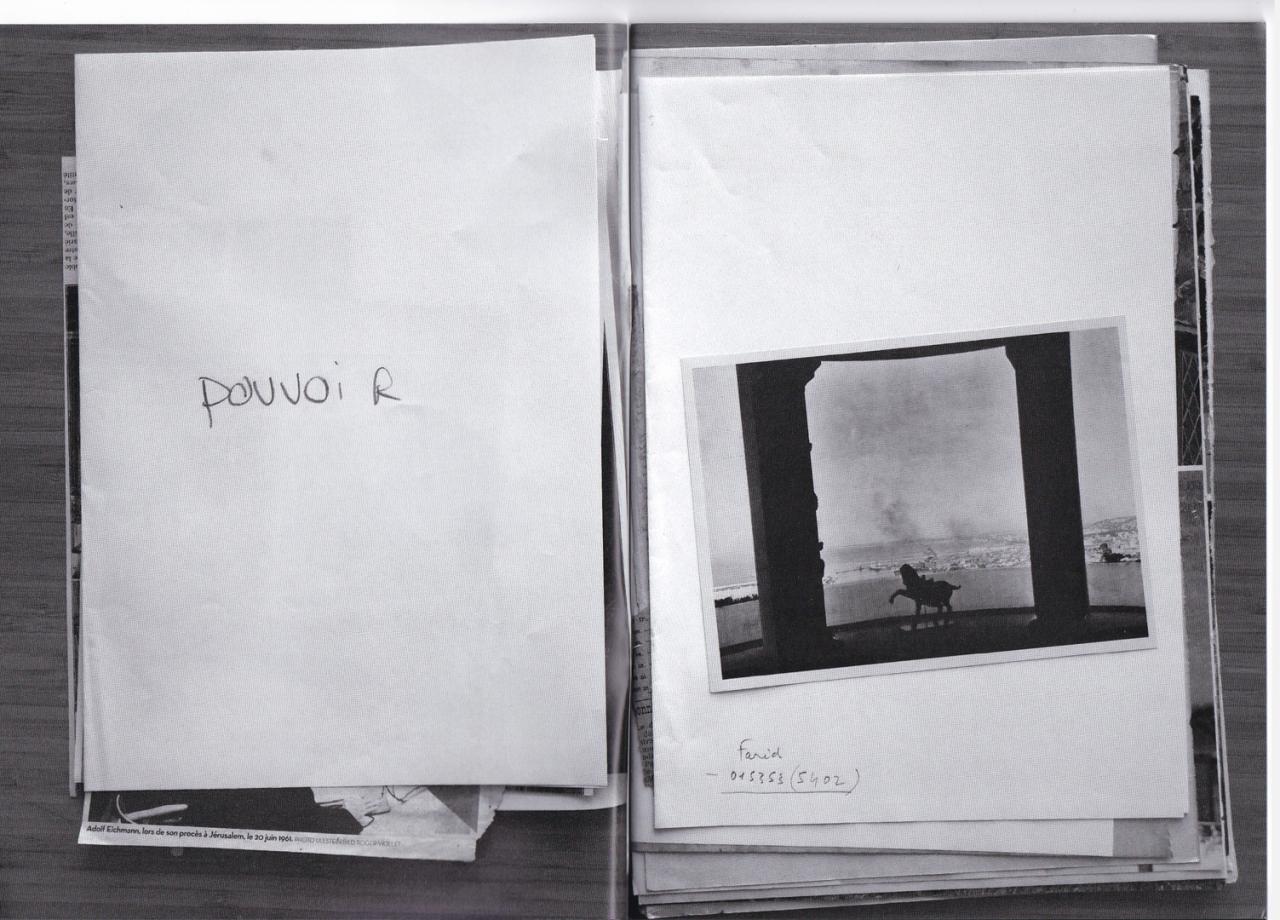
48 pages, B/W printing on 135g paper, saddle-stitched binding with eyelets, 80 copies
In the studio, Maxime Thieffine
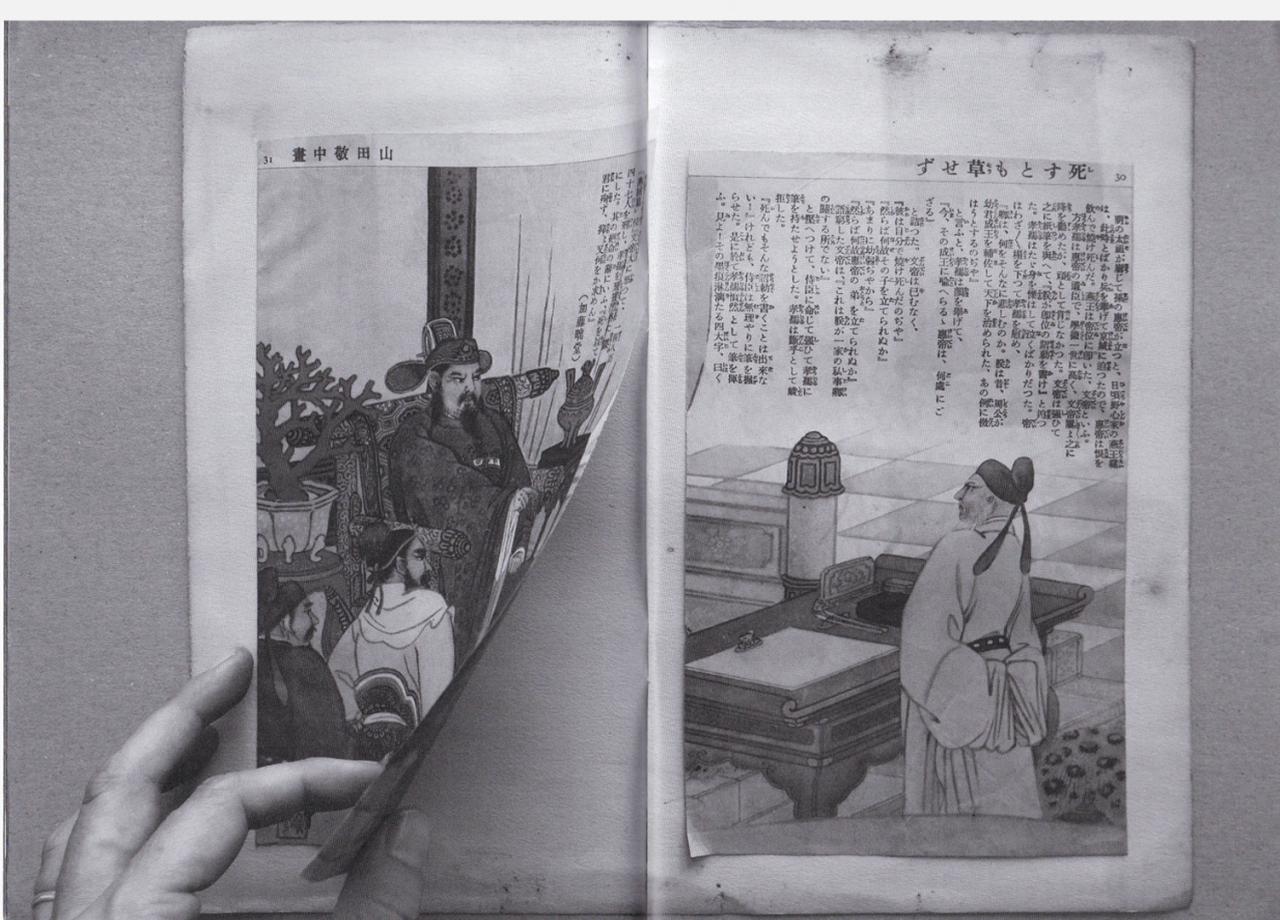
48 pages, B/W printing on 135g paper, saddle-stitched binding with eyelets, 80 copies
In the studio, Maxime Thieffine
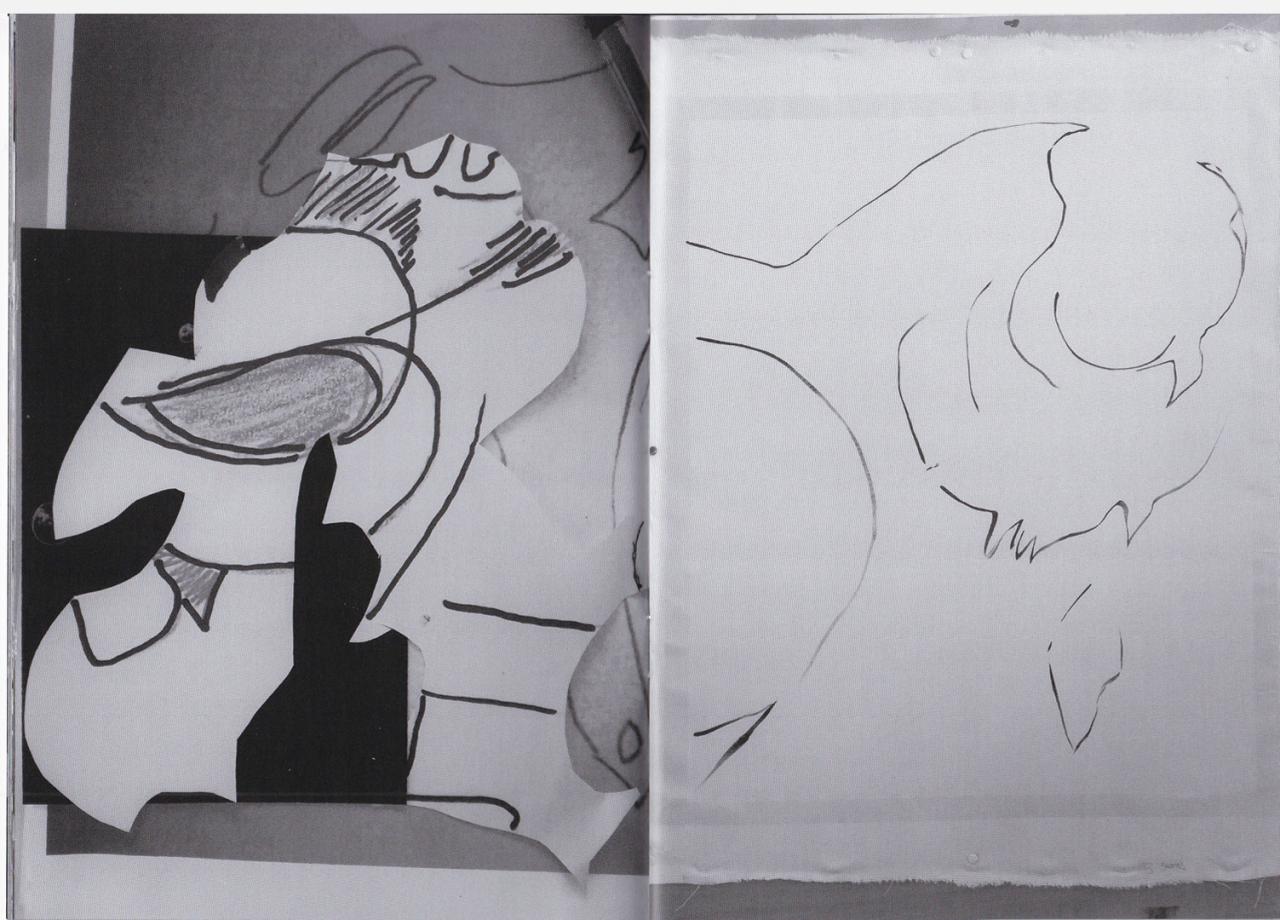
48 pages, B/W printing on 135g paper, saddle-stitched binding with eyelets, 80 copies
Sources, Hippolyte Hentgen
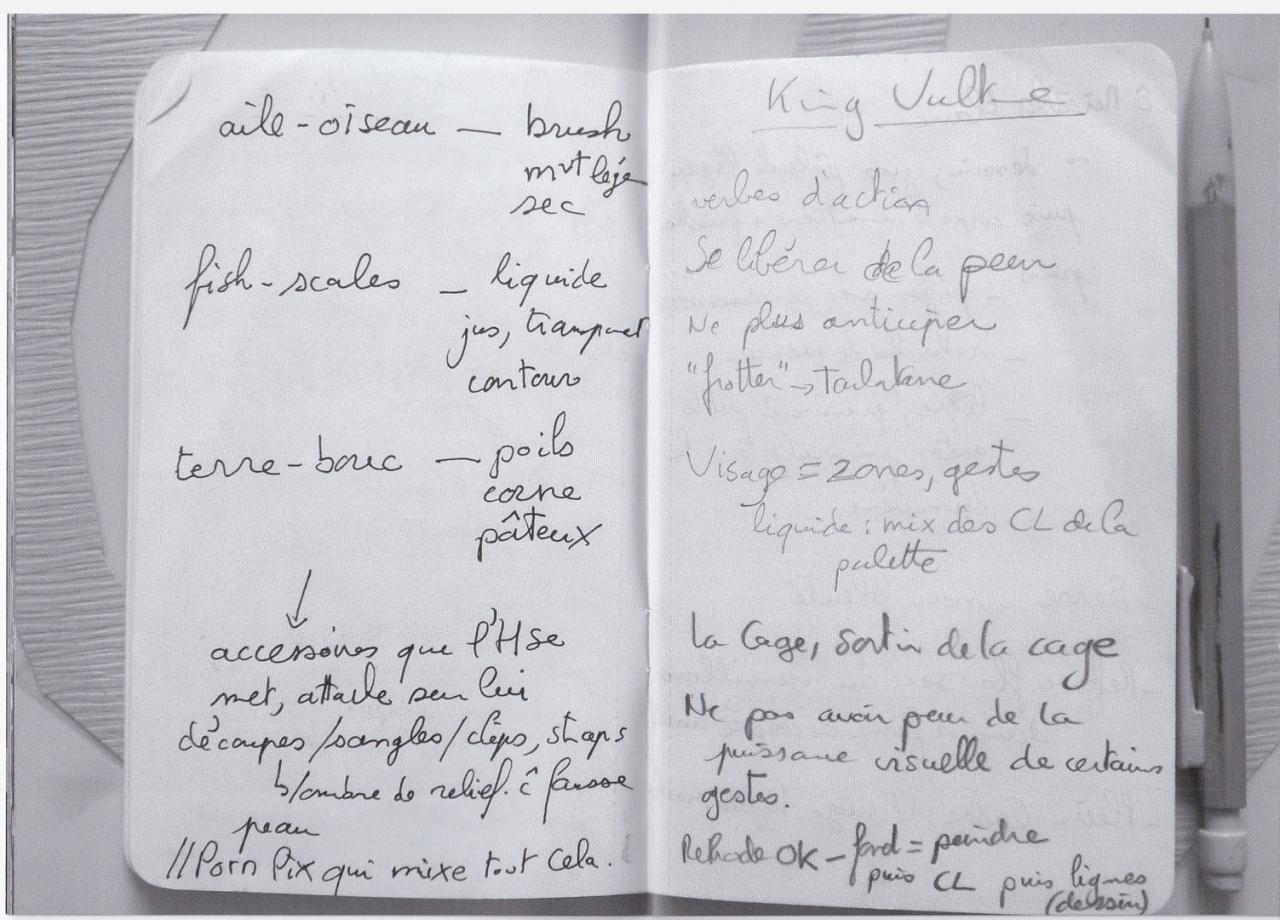
48 pages, B/W printing on 135g paper, saddle-stitched binding with eyelets, 80 copies
Sources, Hippolyte Hentgen
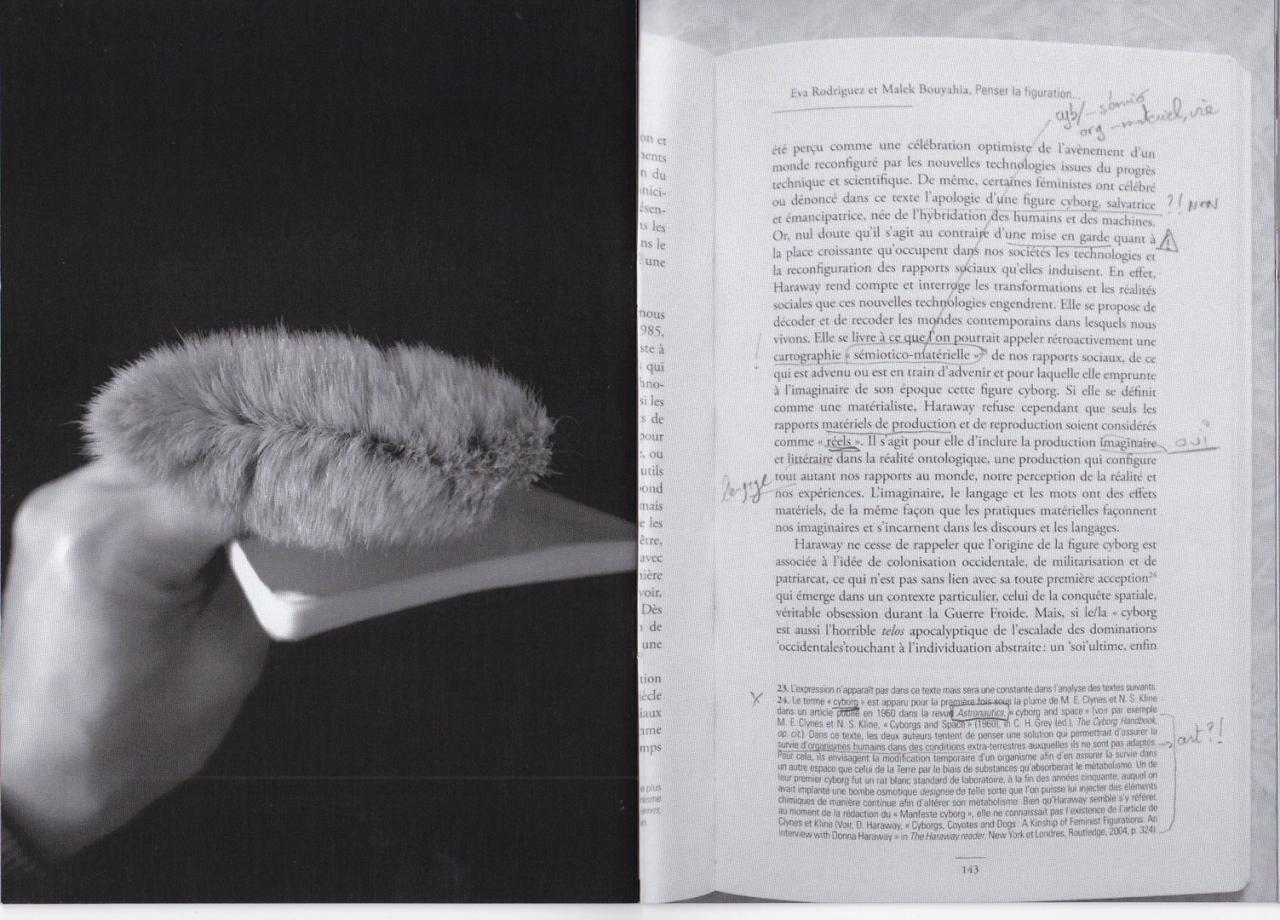
48 pages, B/W printing on 135g paper, saddle-stitched binding with eyelets, 80 copies
Sources, Hippolyte Hentgen
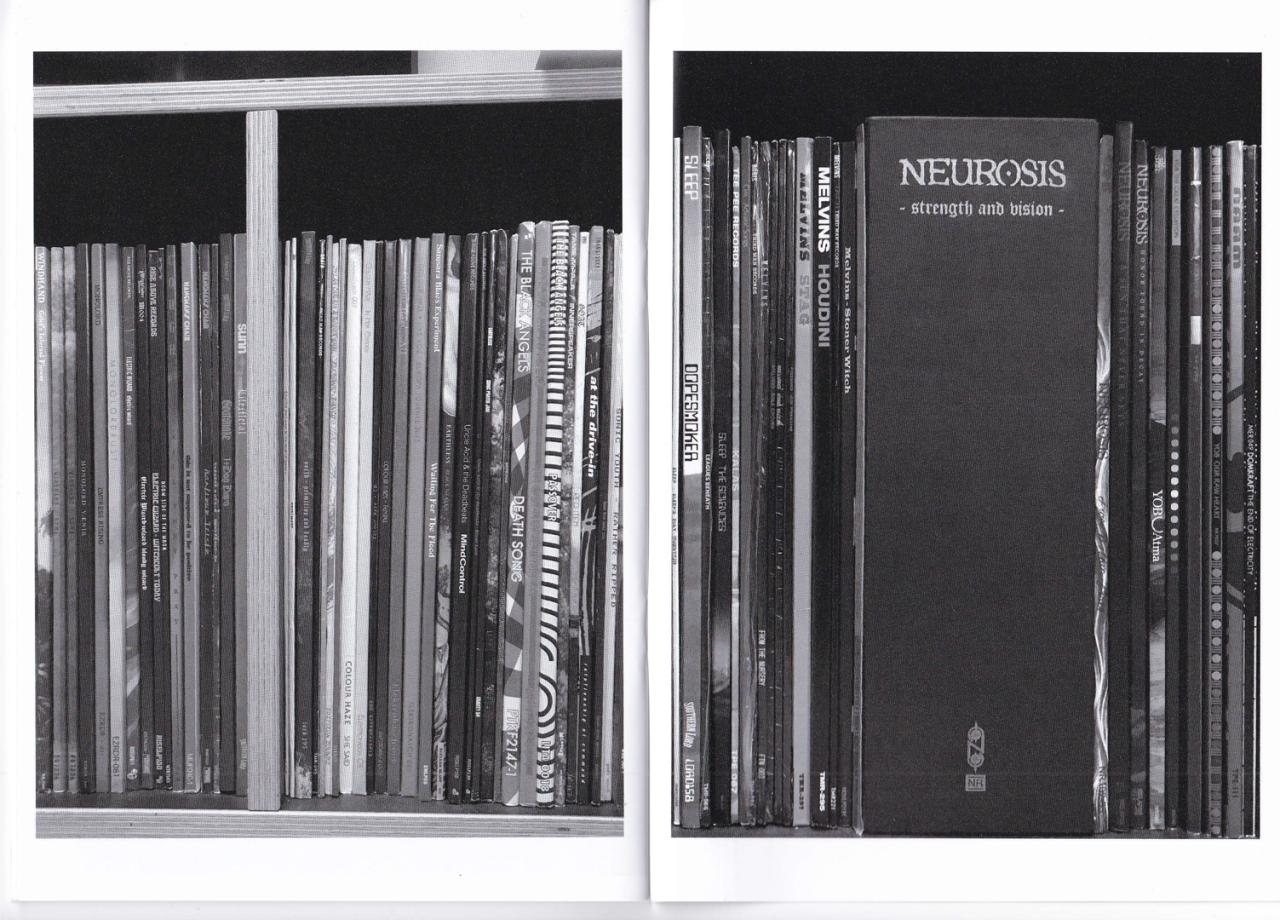
48 pages, B/W printing on 135g paper, saddle-stitched binding with eyelets, 80 copies
Marrow, Sylvain Croci-Torti
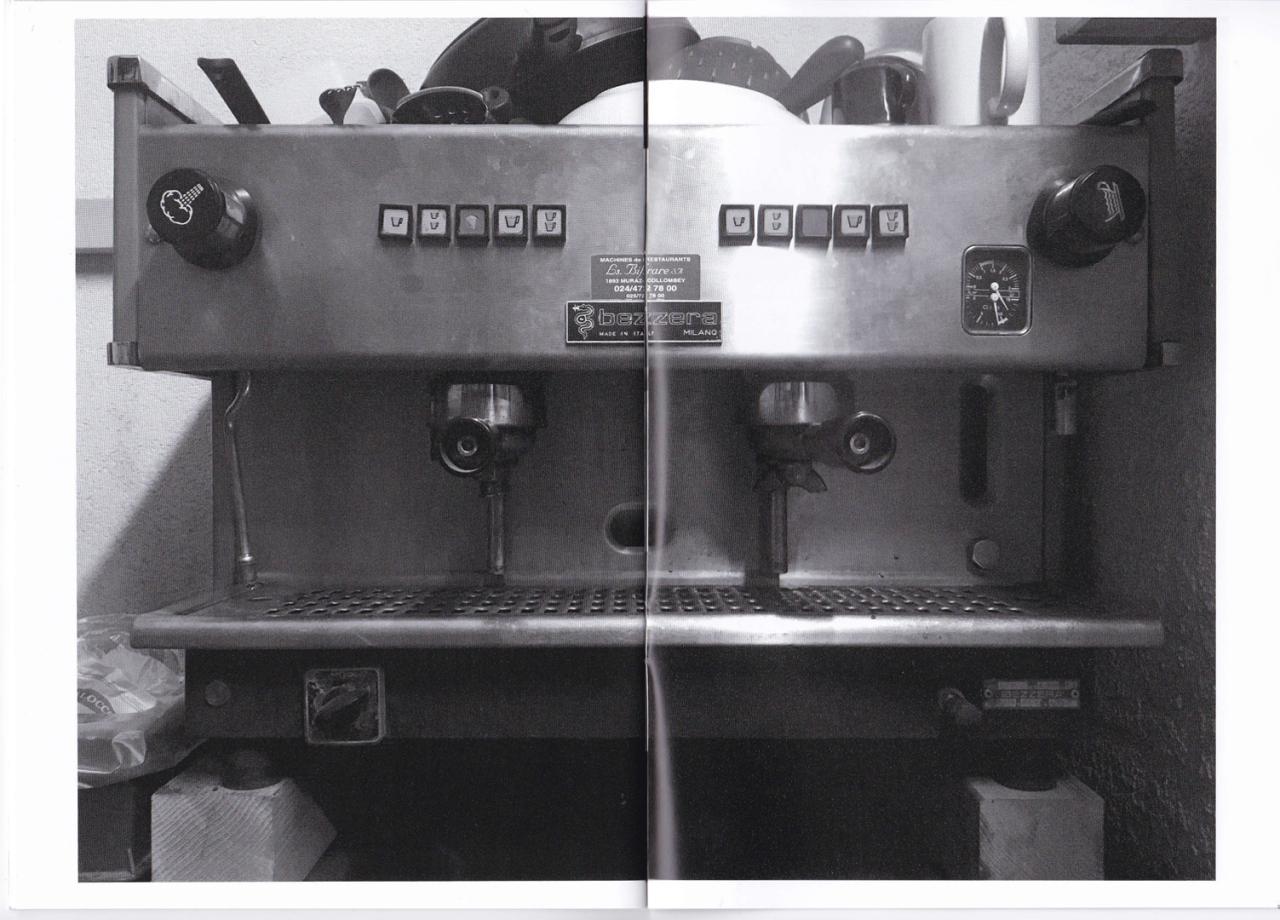
48 pages, B/W printing on 135g paper, saddle-stitched binding with eyelets, 80 copies
Marrow, Sylvain Croci-Torti
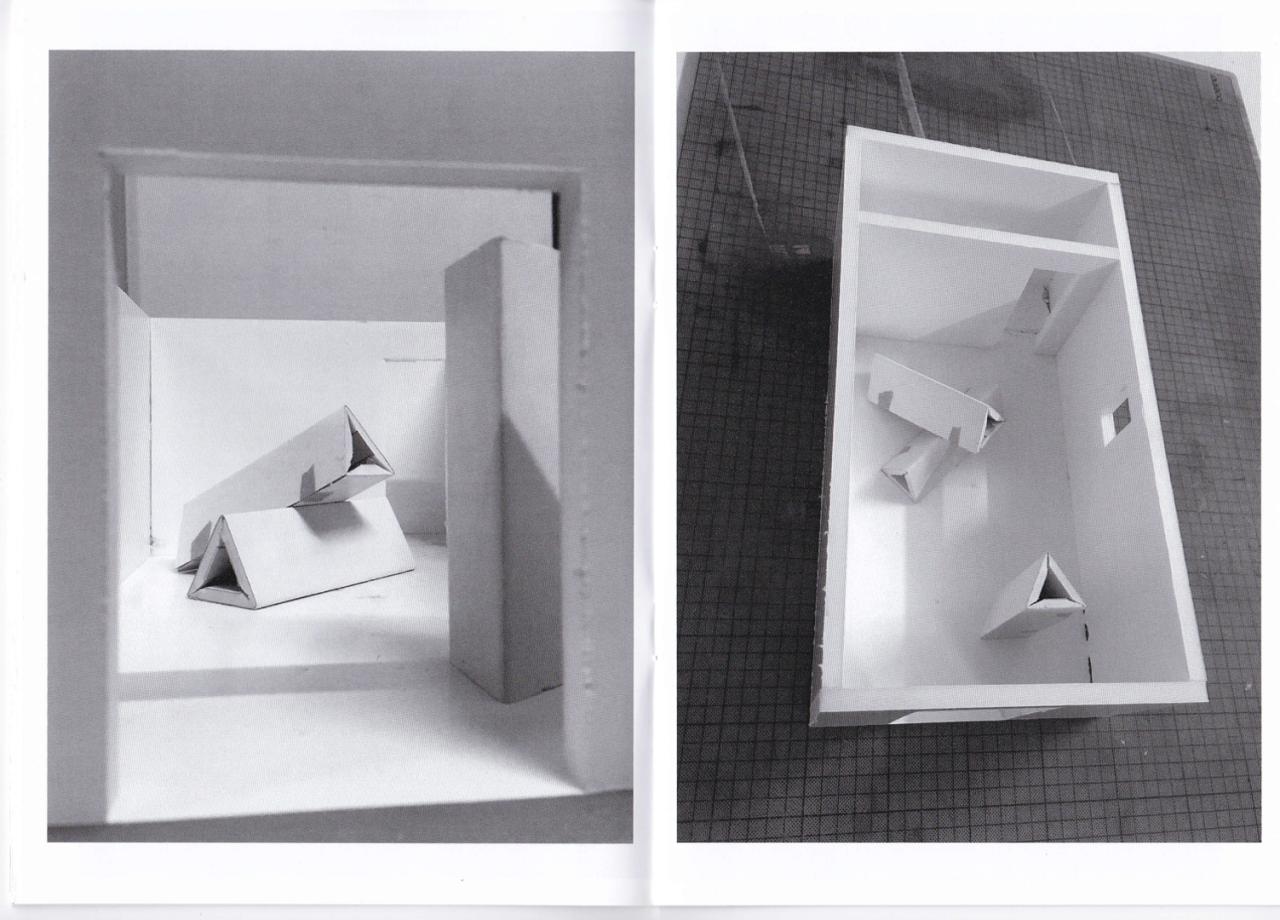
48 pages, B/W printing on 135g paper, saddle-stitched binding with eyelets, 80 copies
Marrow, Sylvain Croci-Torti

▸ Marie Gayet: "With LIBRARY, Éditions Exposé-e-s’ second project, created in 2019, we seem to be getting closer to what we usually mean by an art publication or a monograph. It’s a bound work, there are visuals, some text, black and white, no title! Even if we feel that a firm choice to be very formal was made for most of the proposals, no two “books” are alike.
▸ Guillaume Perez: we wanted a format that wouldn’t be POST’s continuity, but almost the contrary, it’s an invitation to present a practice, even if the word is a bit overused, instead of a work, or rather a way of working. A way for artists to make explicit what nourishes their personal practices, whether it’s in the gesture, the context, or the studio work."
— Excerpt from an interview conducted by Marie Gayet for the review Artaïs, Autumn 2021

Éditions Exposé-e-s is thus conceived as collaboration, trust and exchange, everything is created with the approval of one and/or another participant, everything is openly modified and modifiable by one and/or another party.
Working on such a project permits us on the one hand to satisfy a need for collaboration, one that we don’t (or rarely) put in place in our own respective practices. It also allows us to rethink our roles as artists as creators and disseminators of information, the information here being the work of other artists.
And like everything else, this text was written by four people, out of multiple instances of communication, in a hotel room, on a train, in the metro and on the patio of a cafe between Aubervilliers and Lyon. You are reading the ninth and final version.
Alex Chevalier and Guillaume Perez for “Éditions Exposé-e-s”